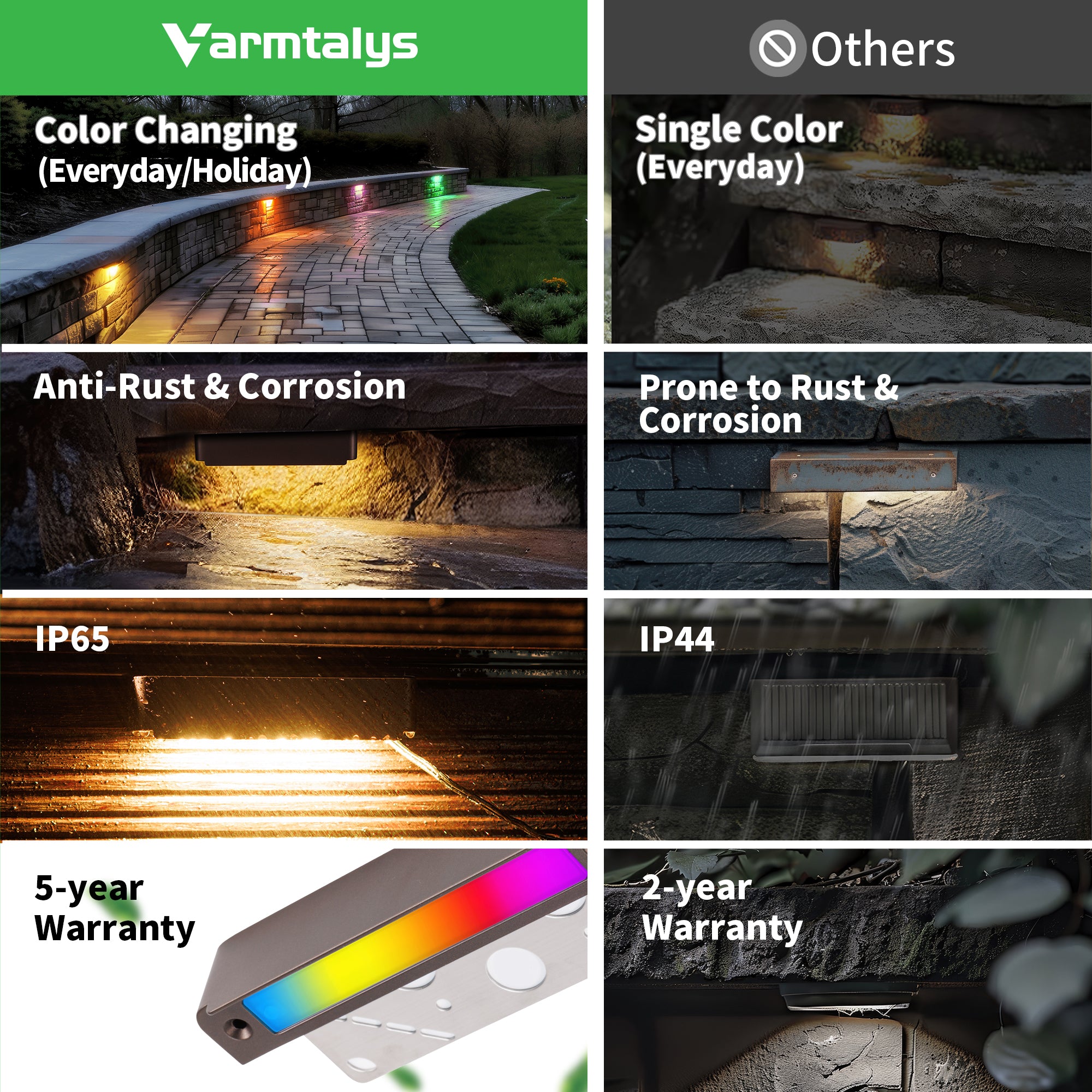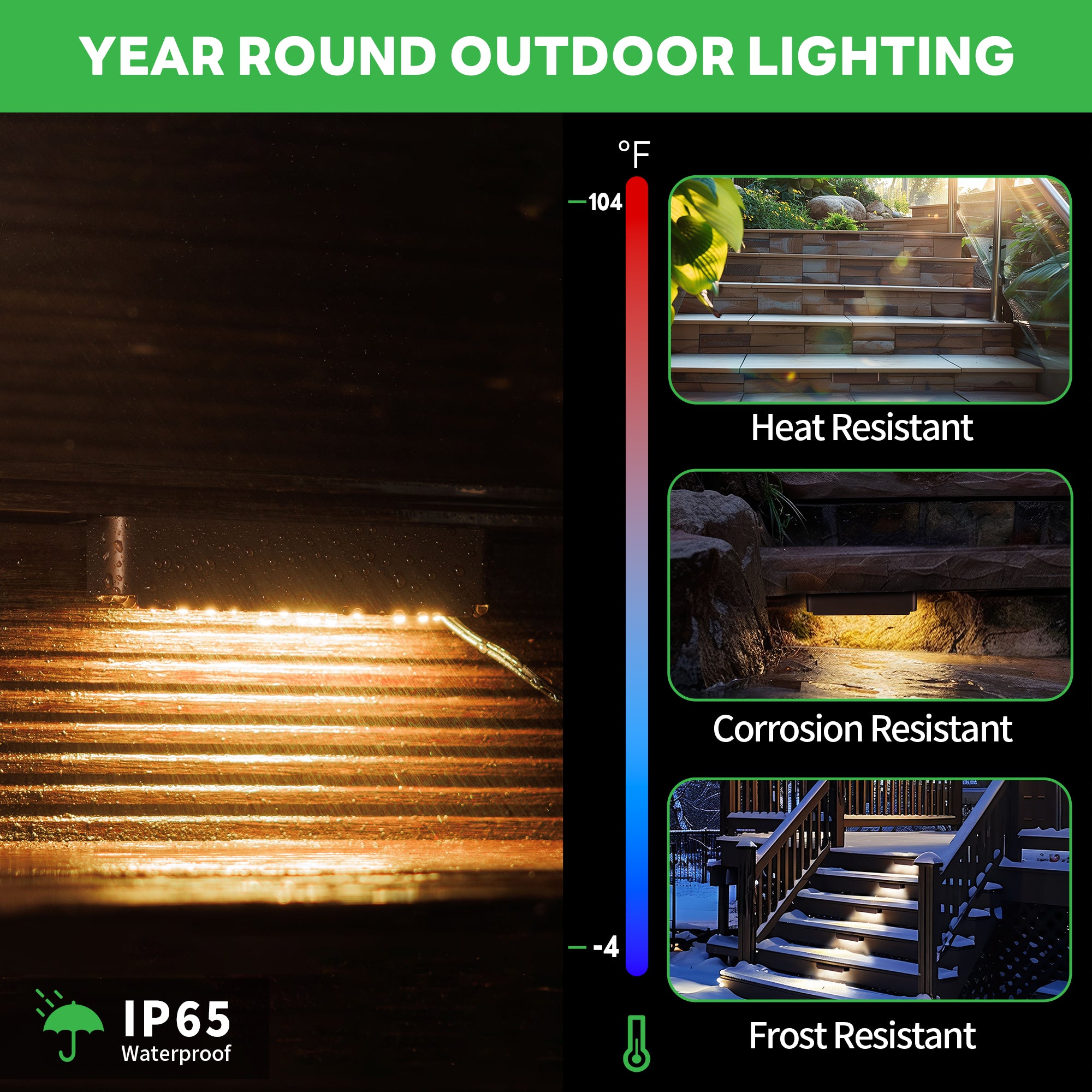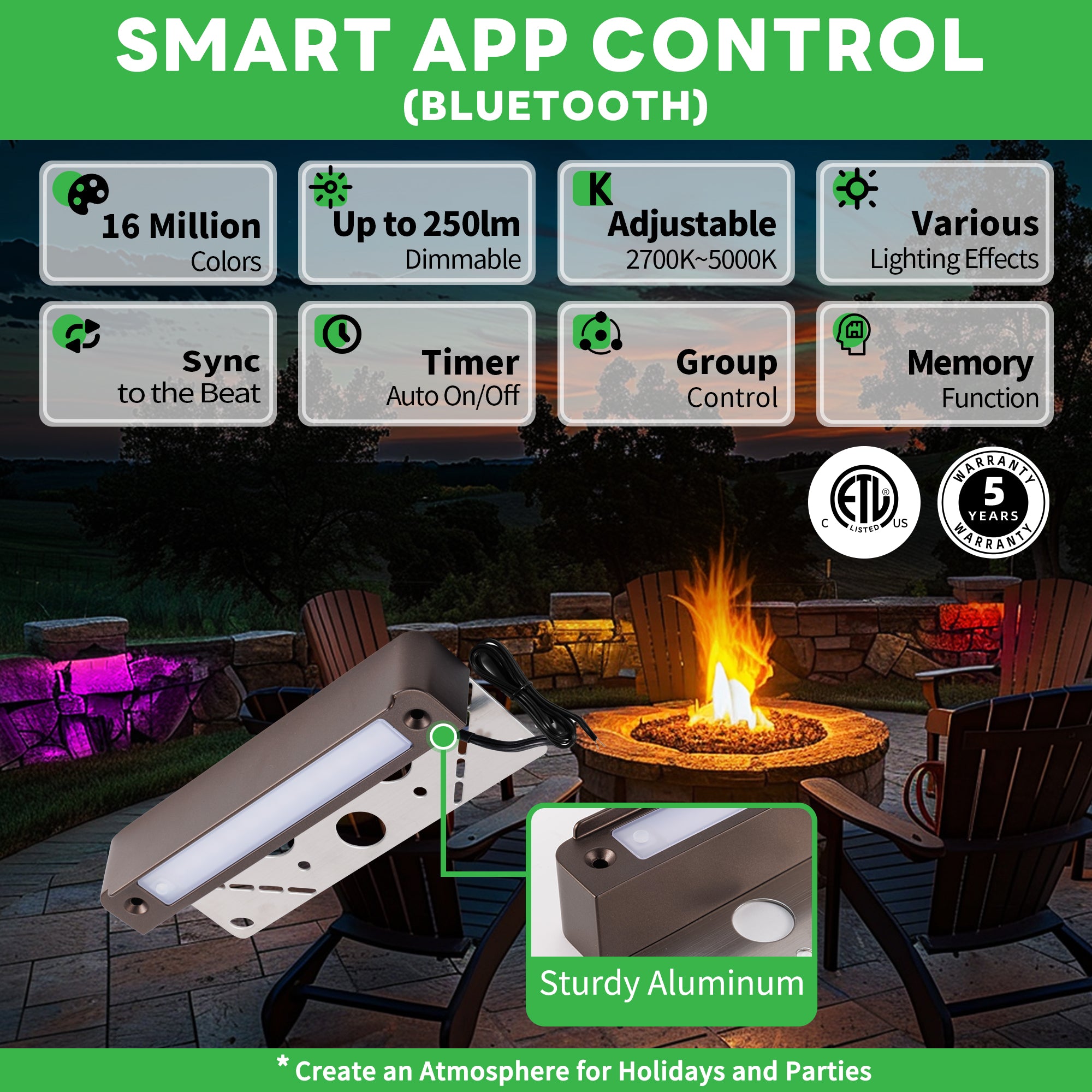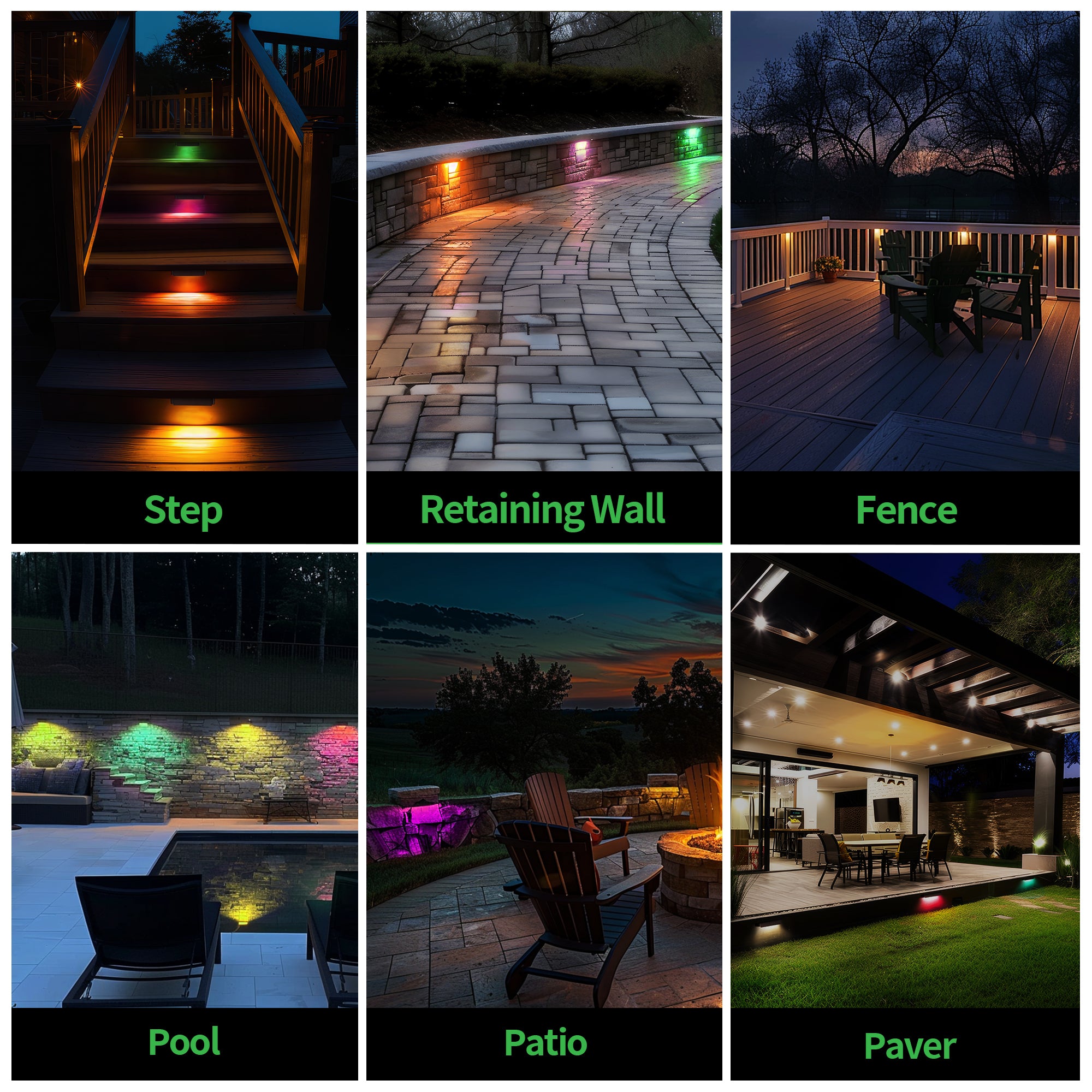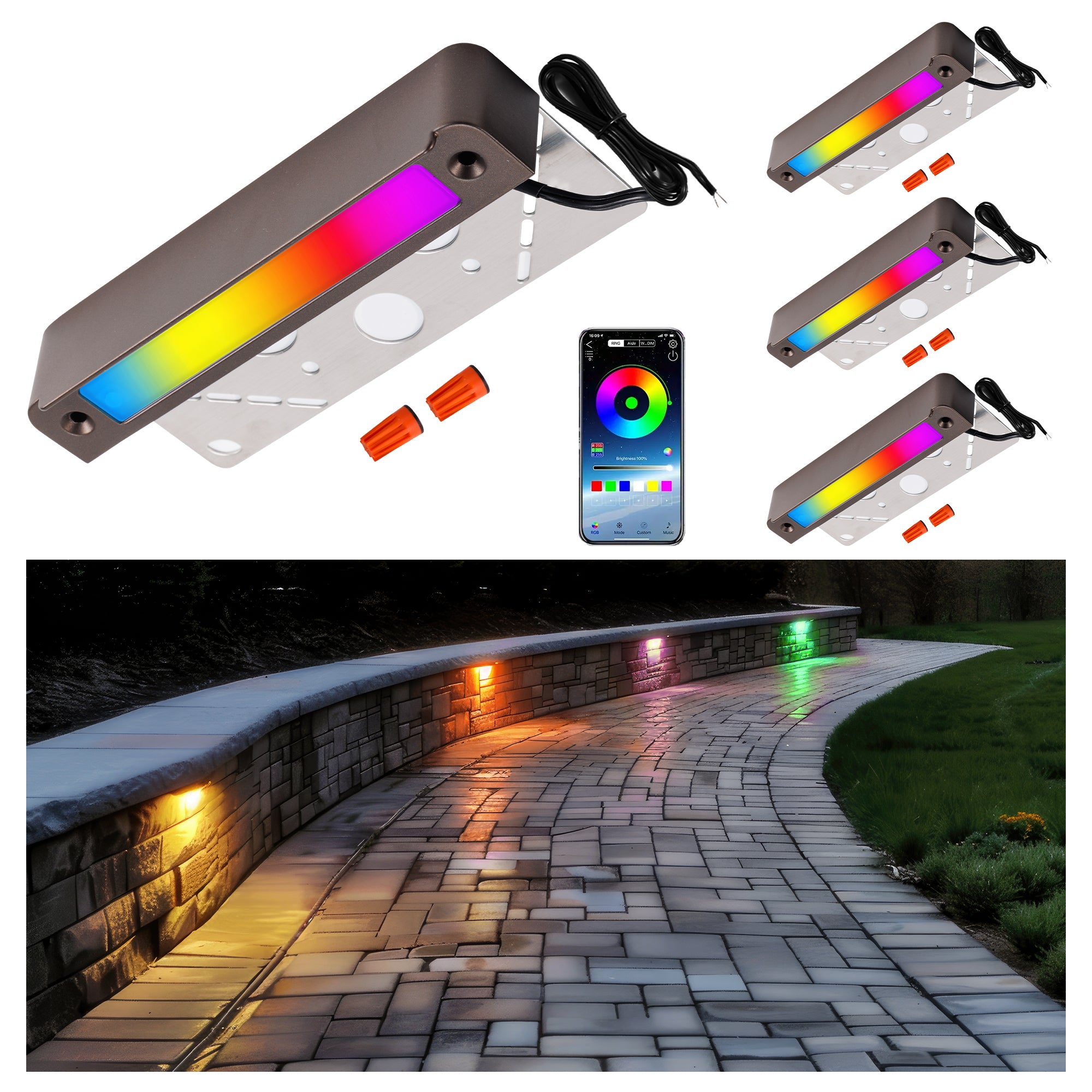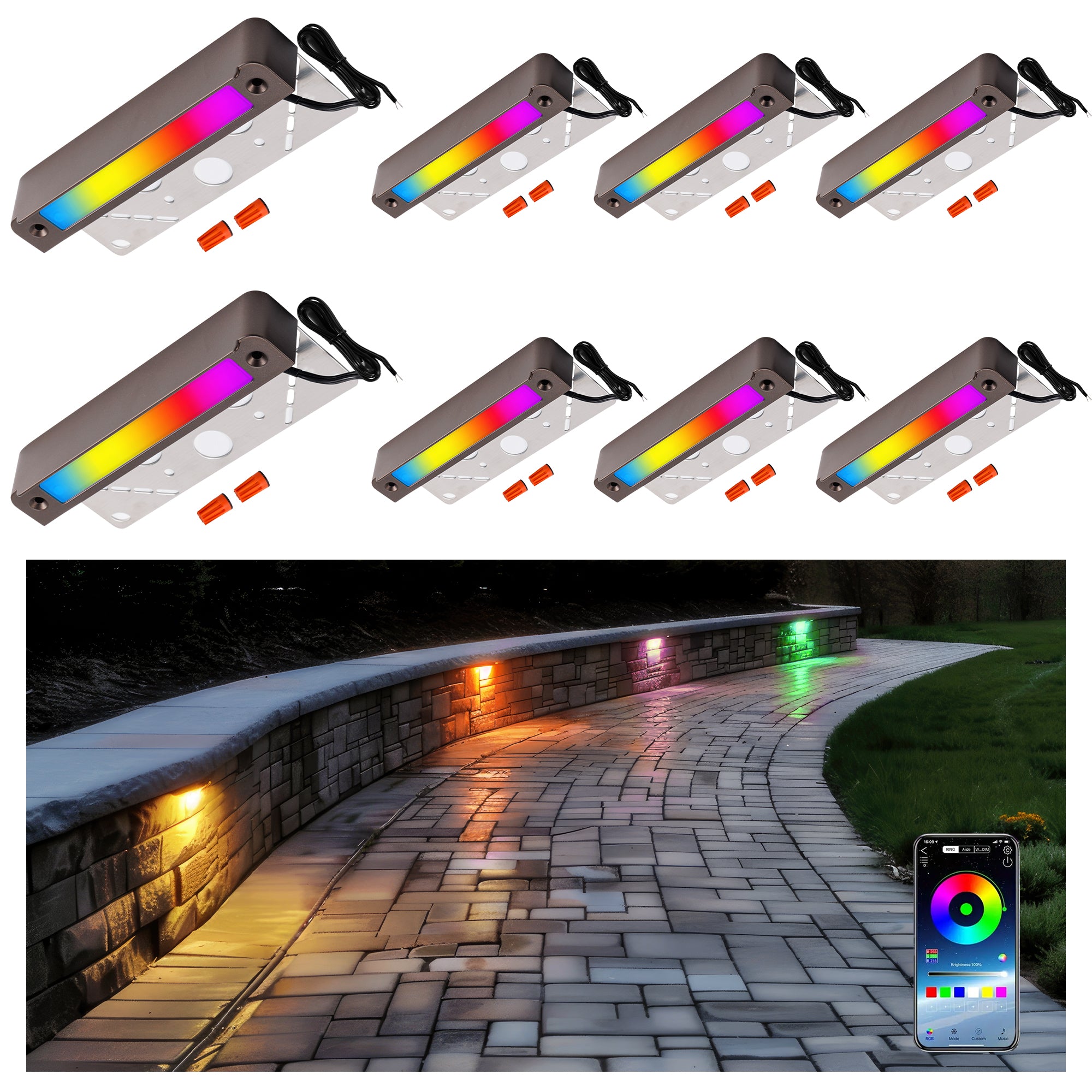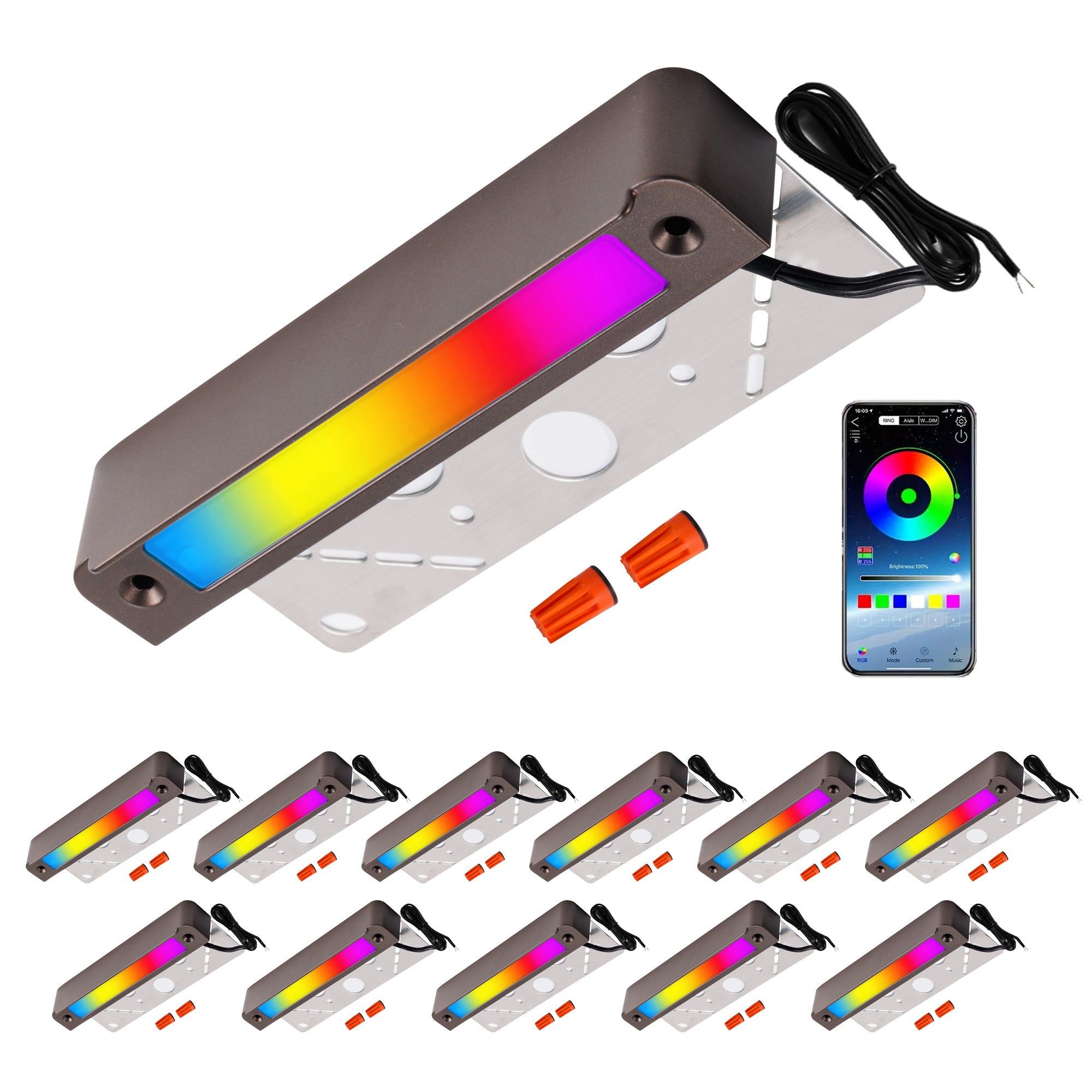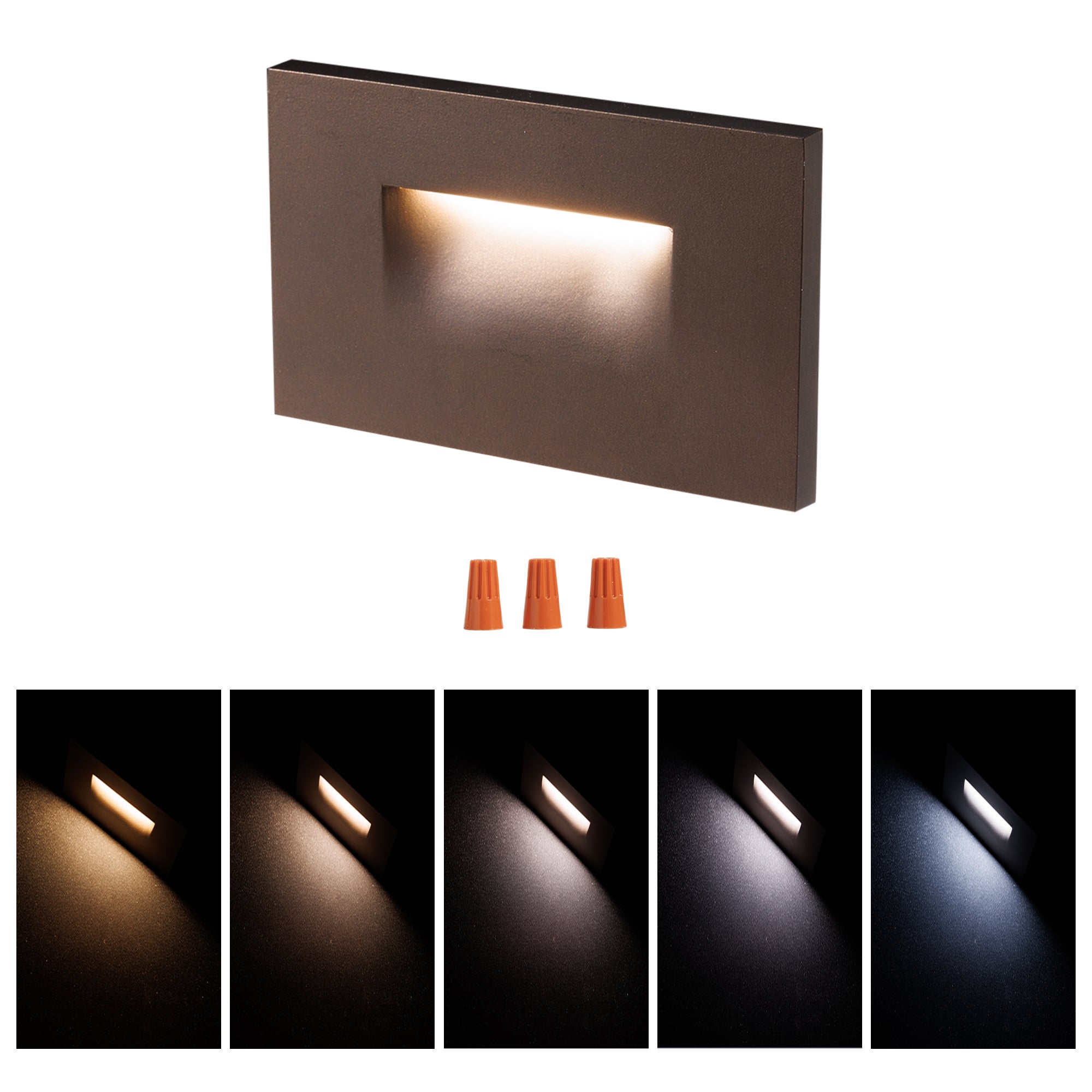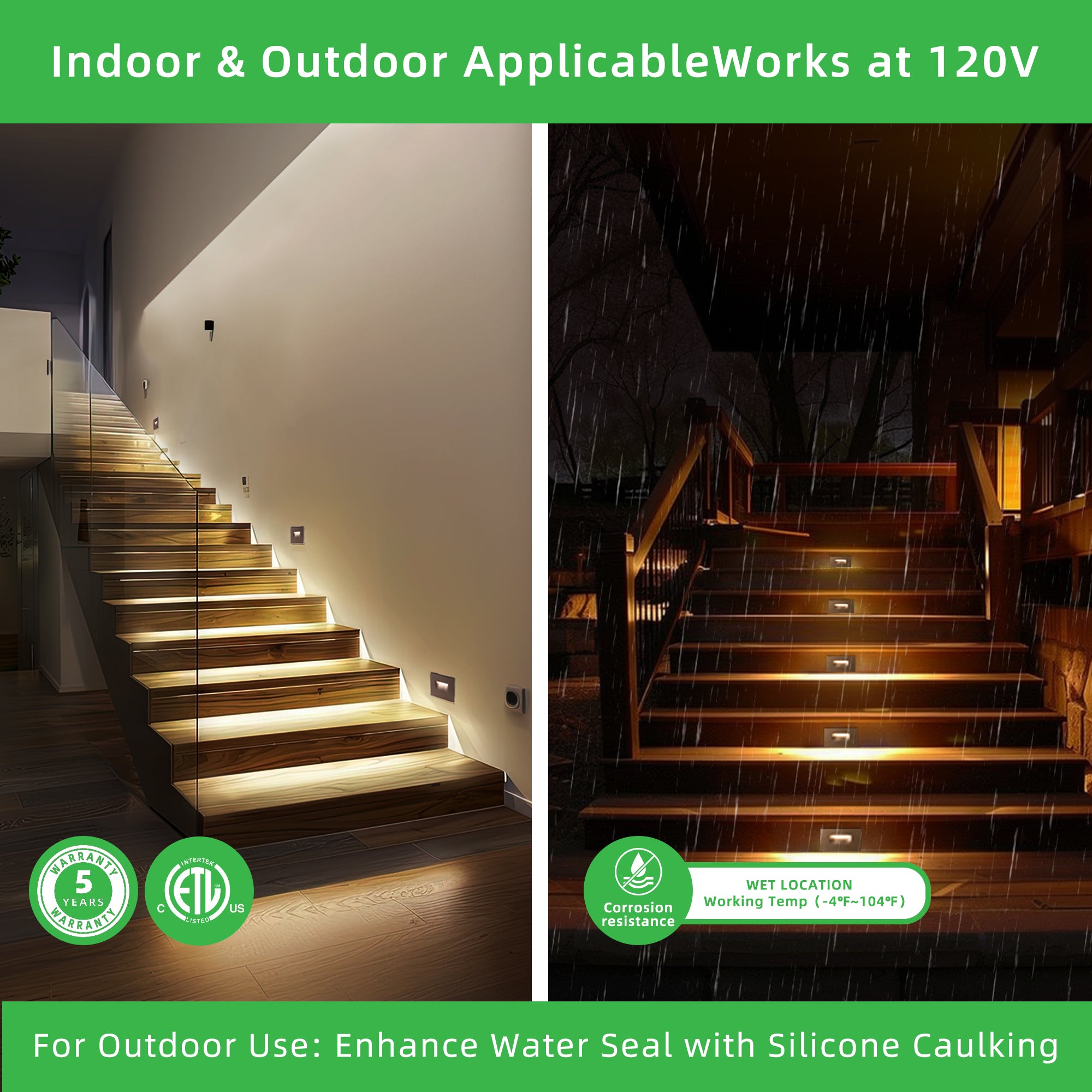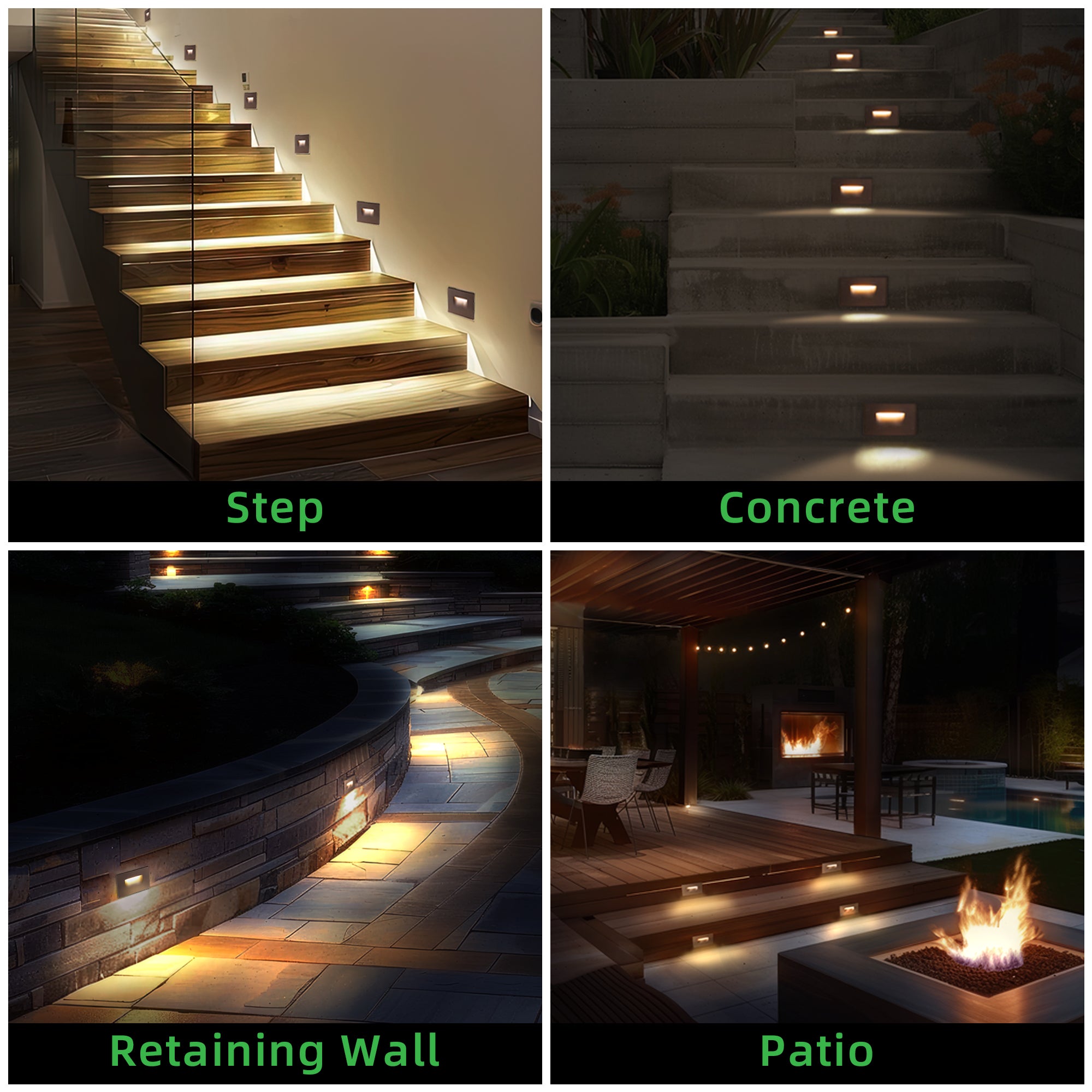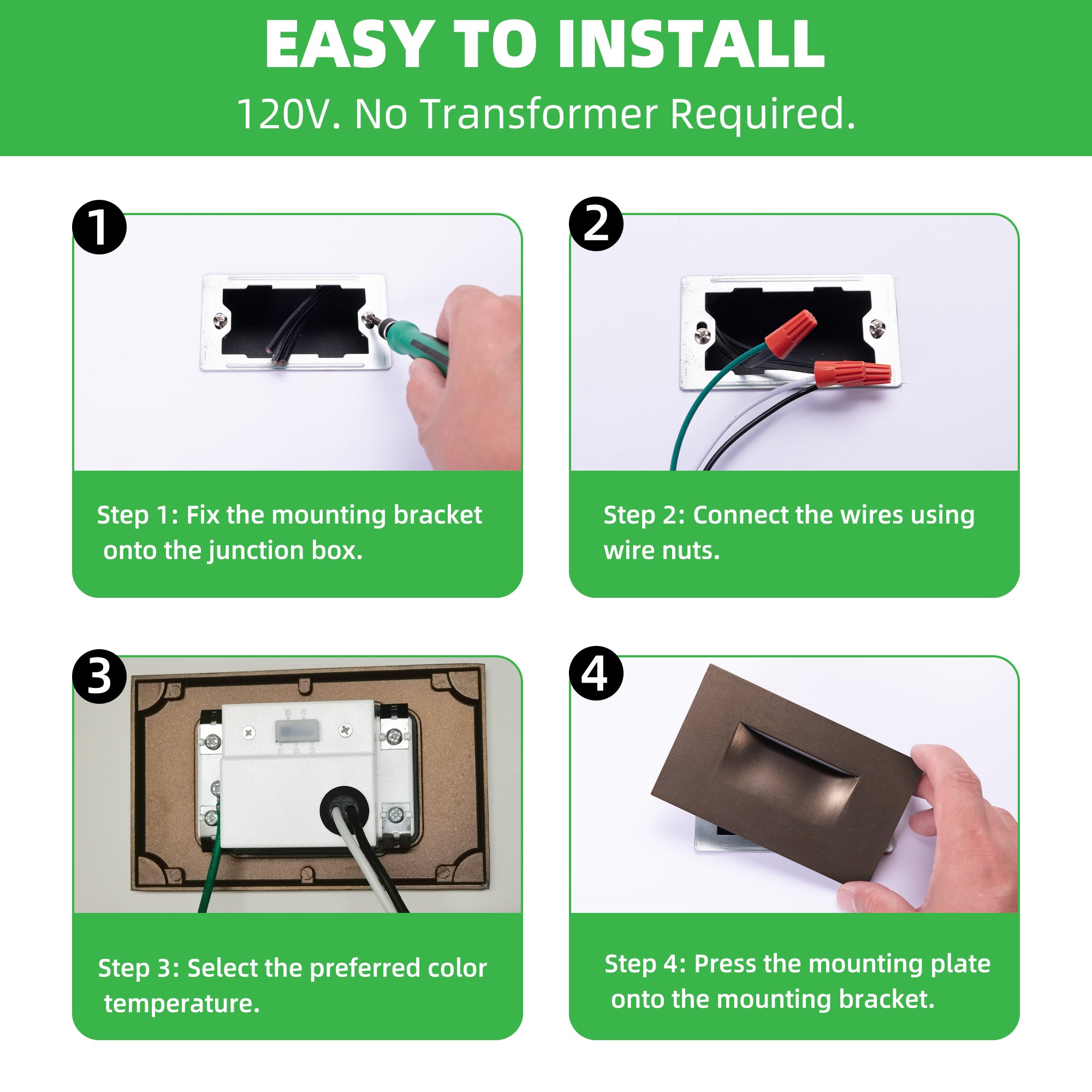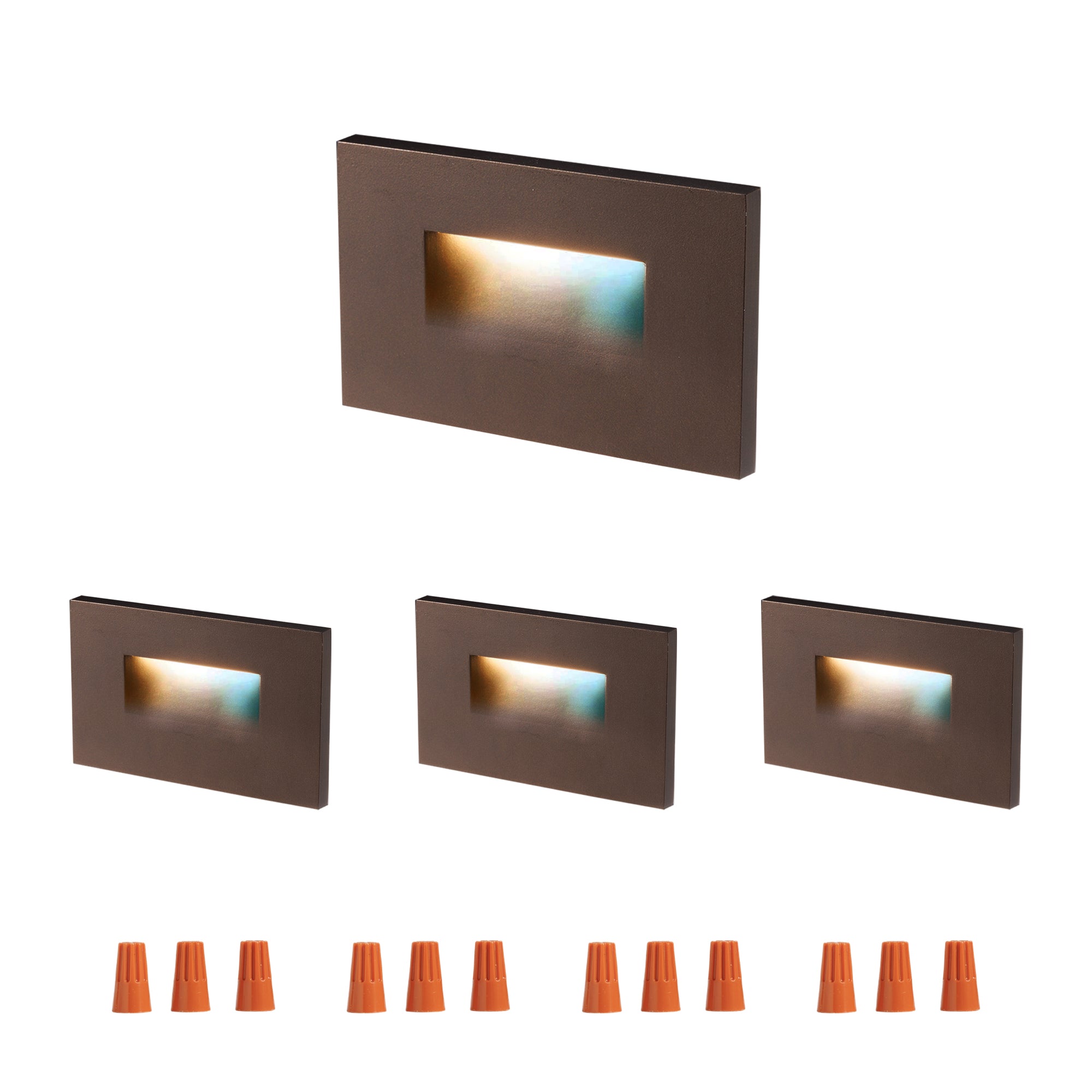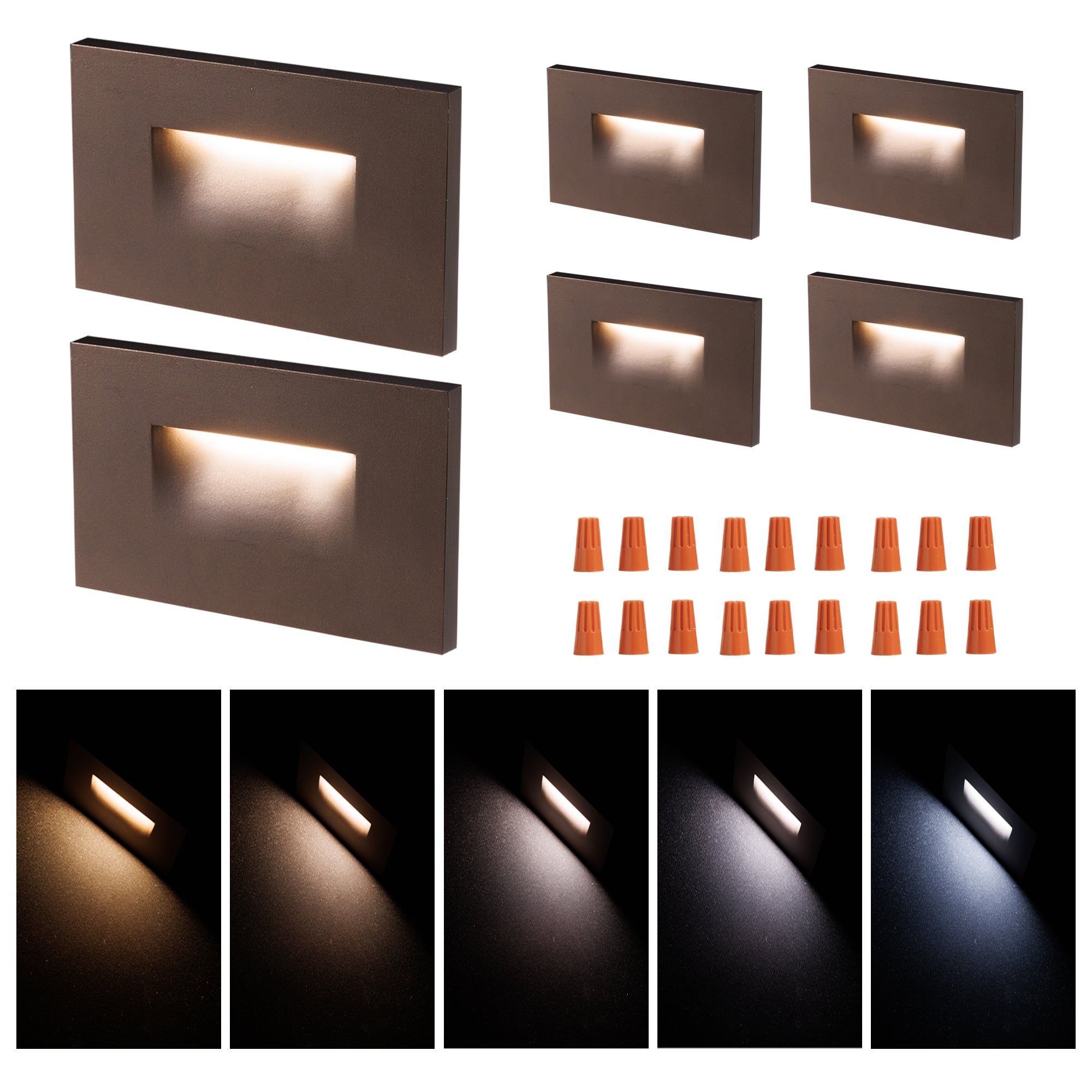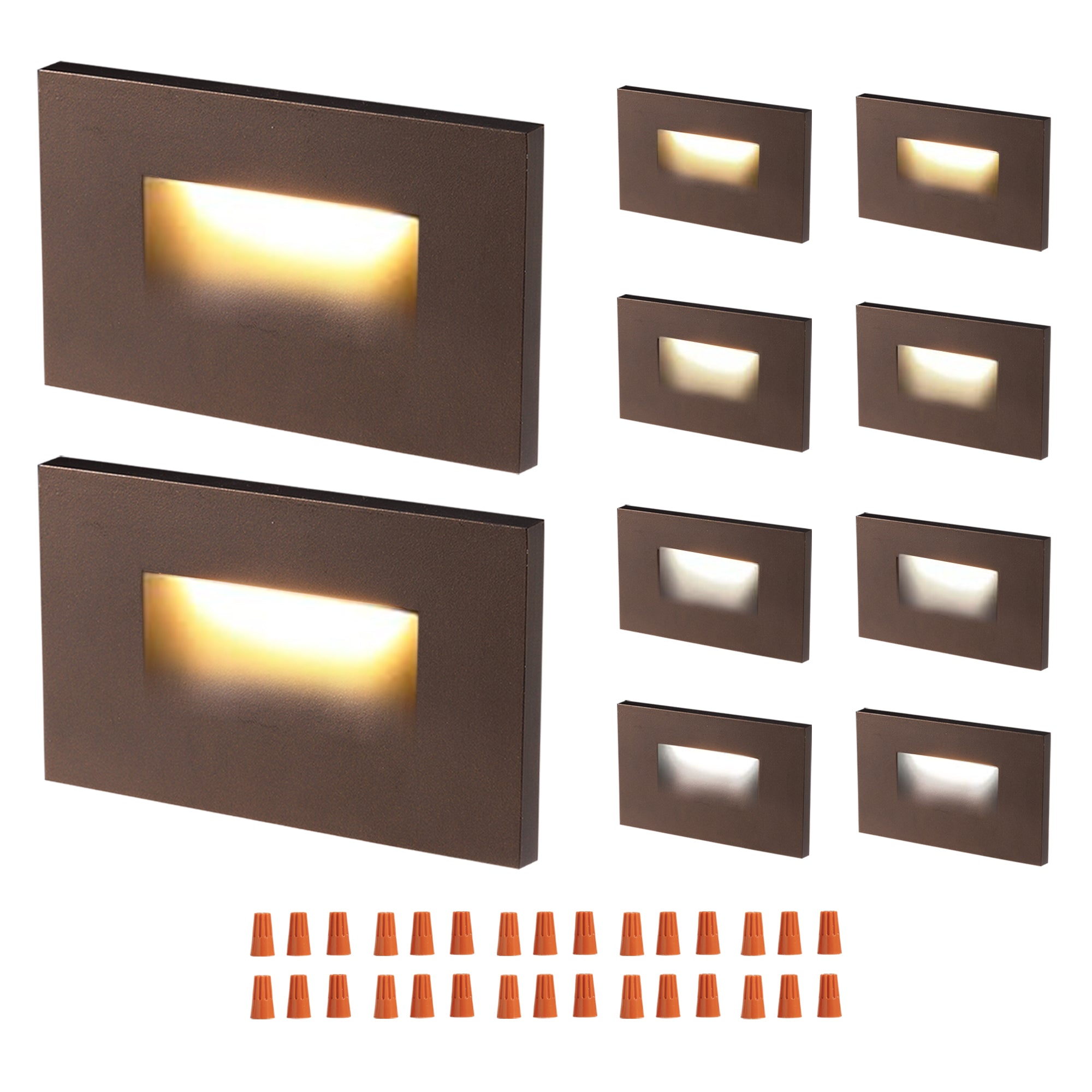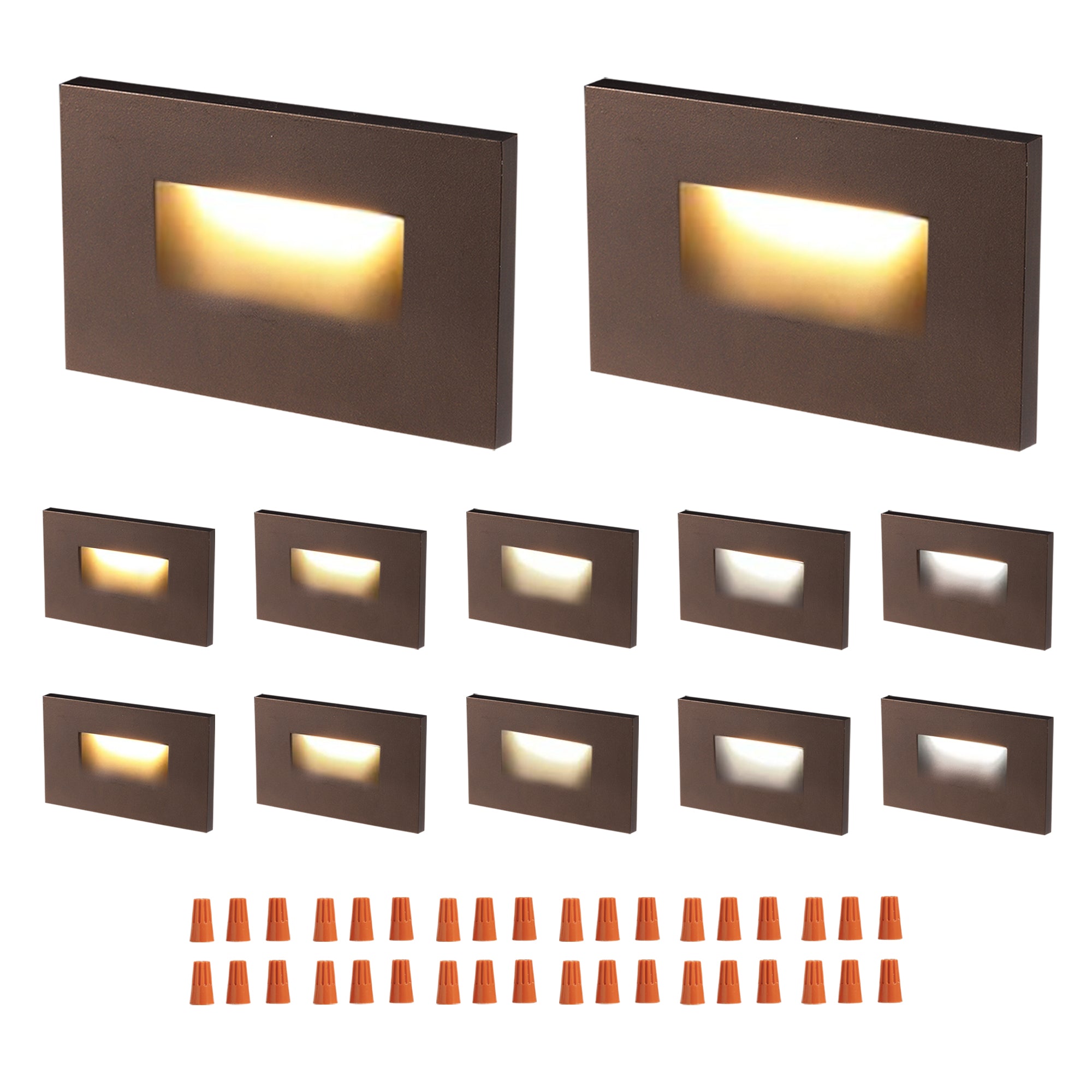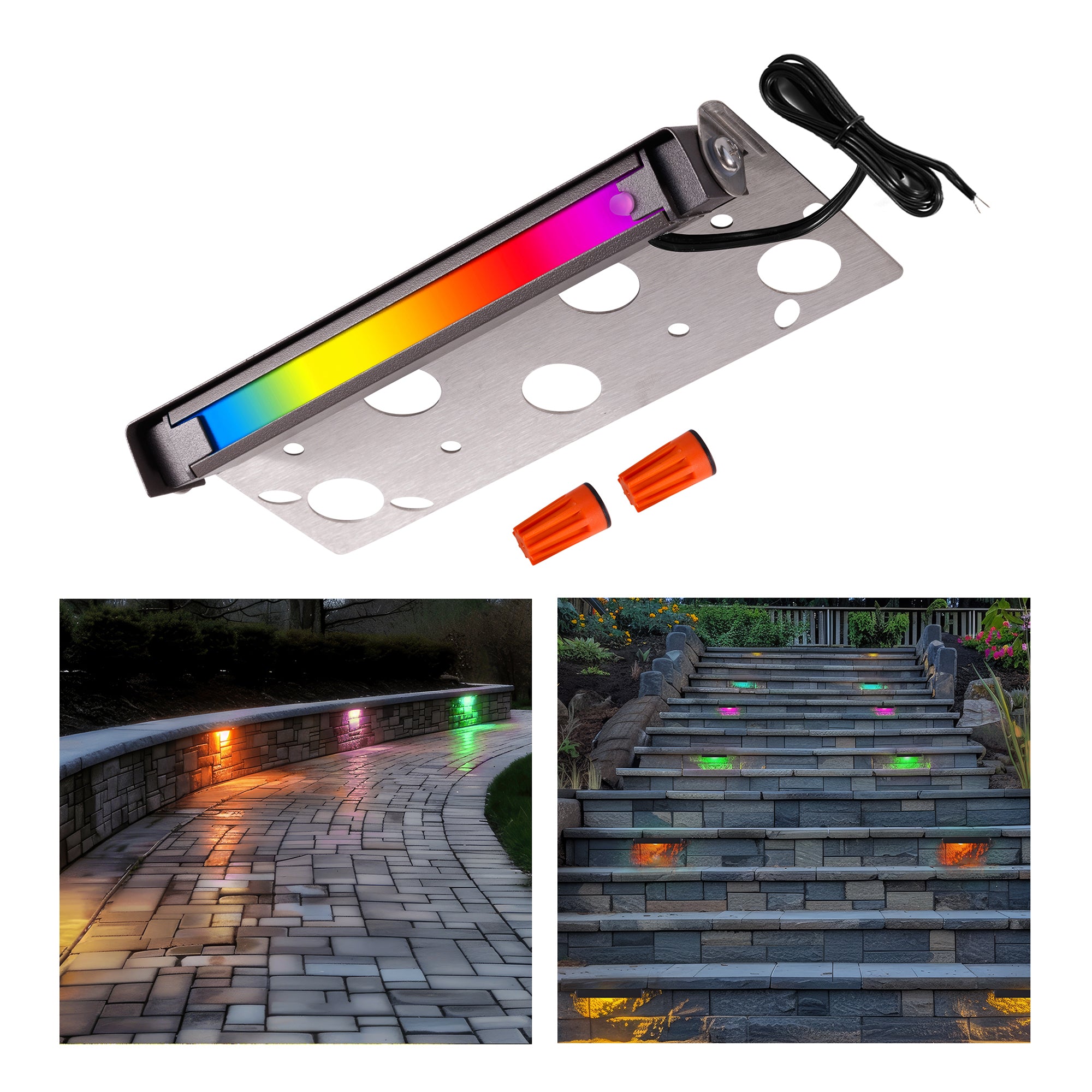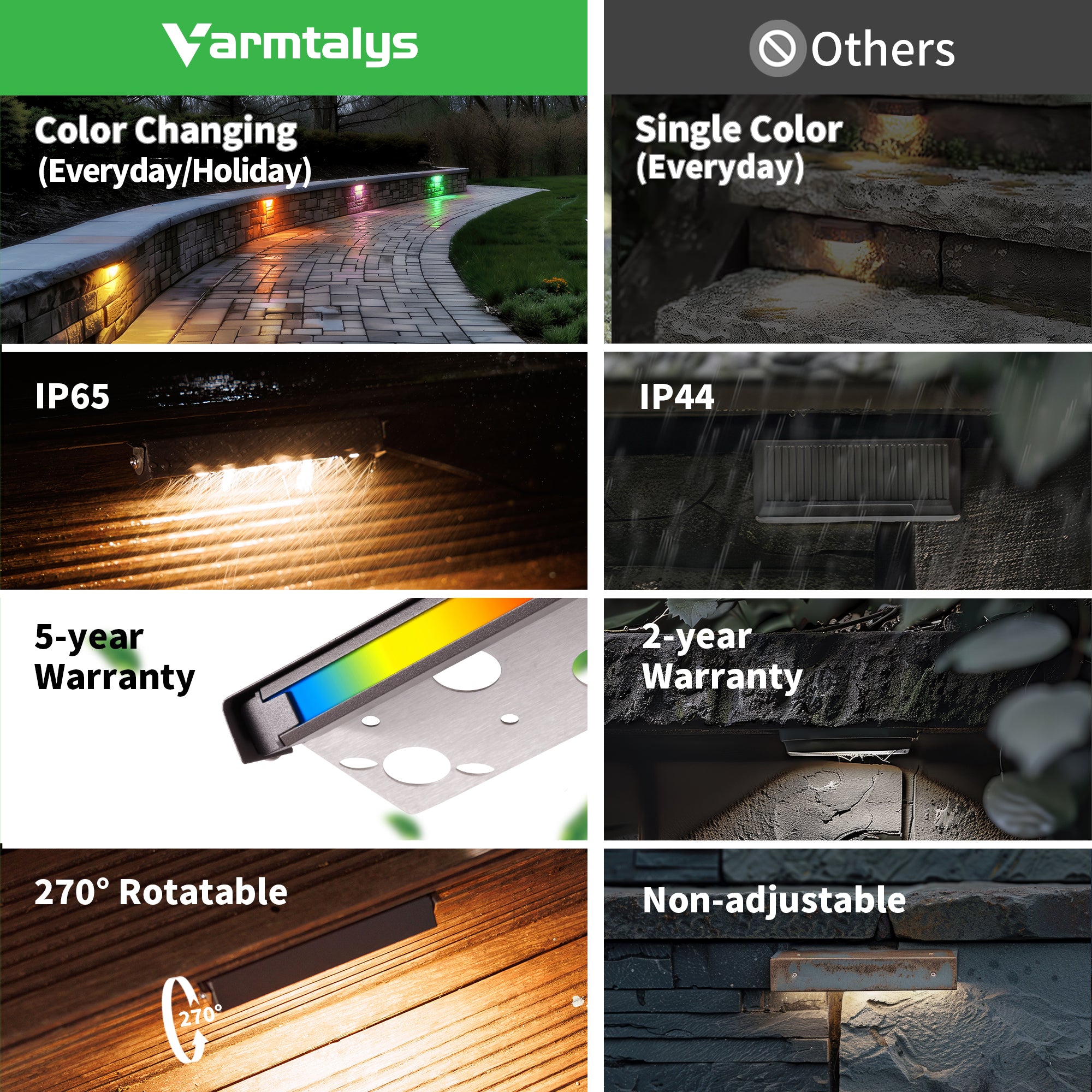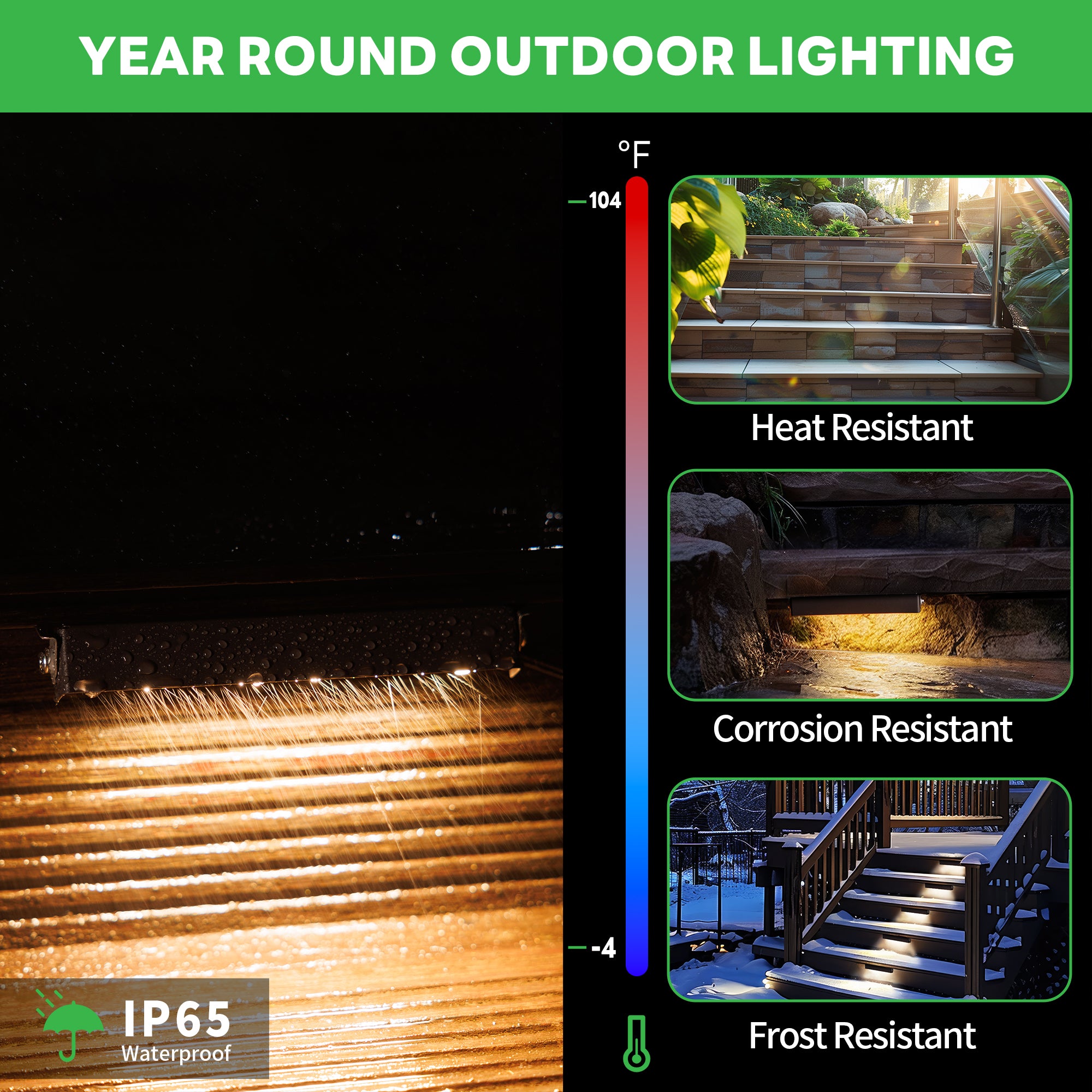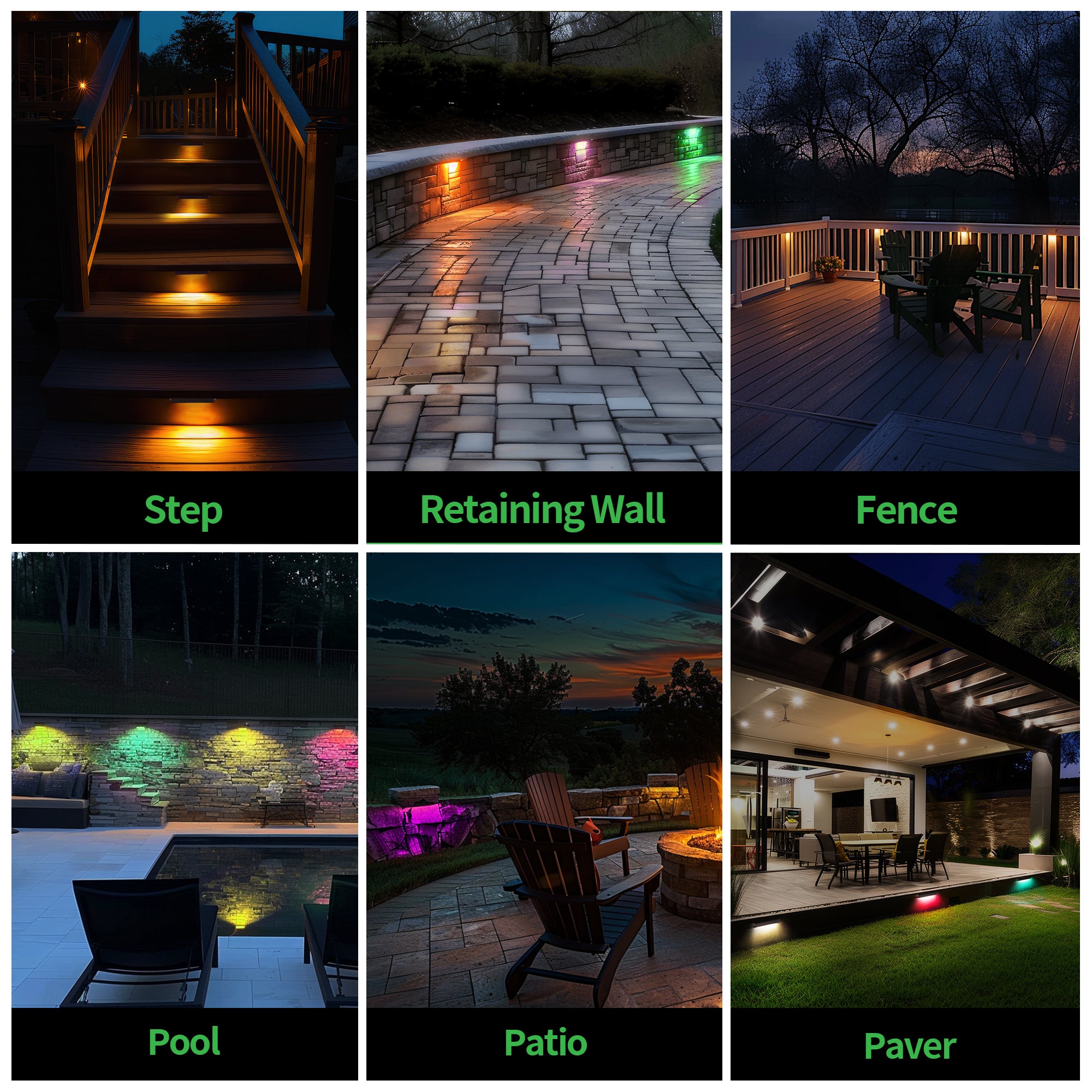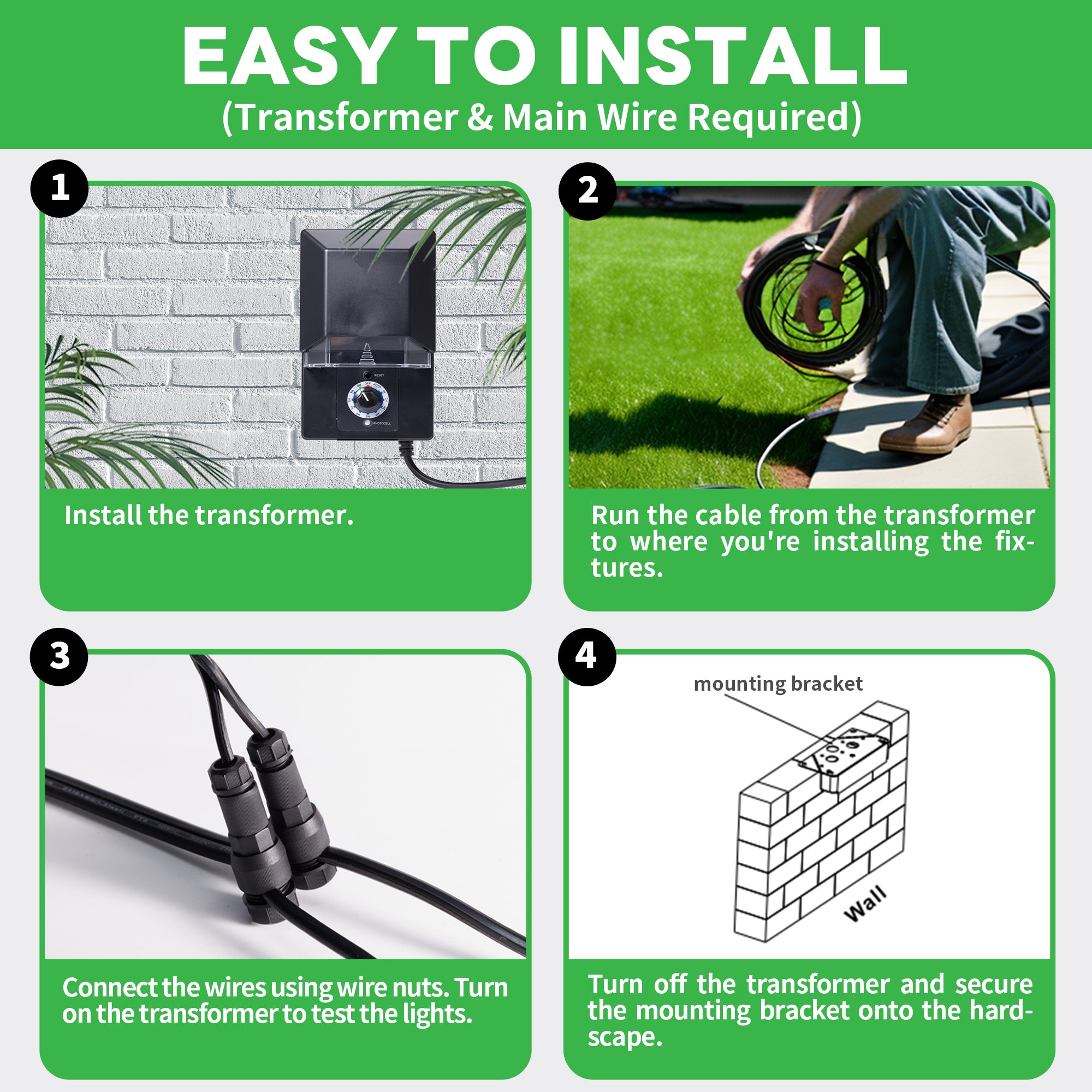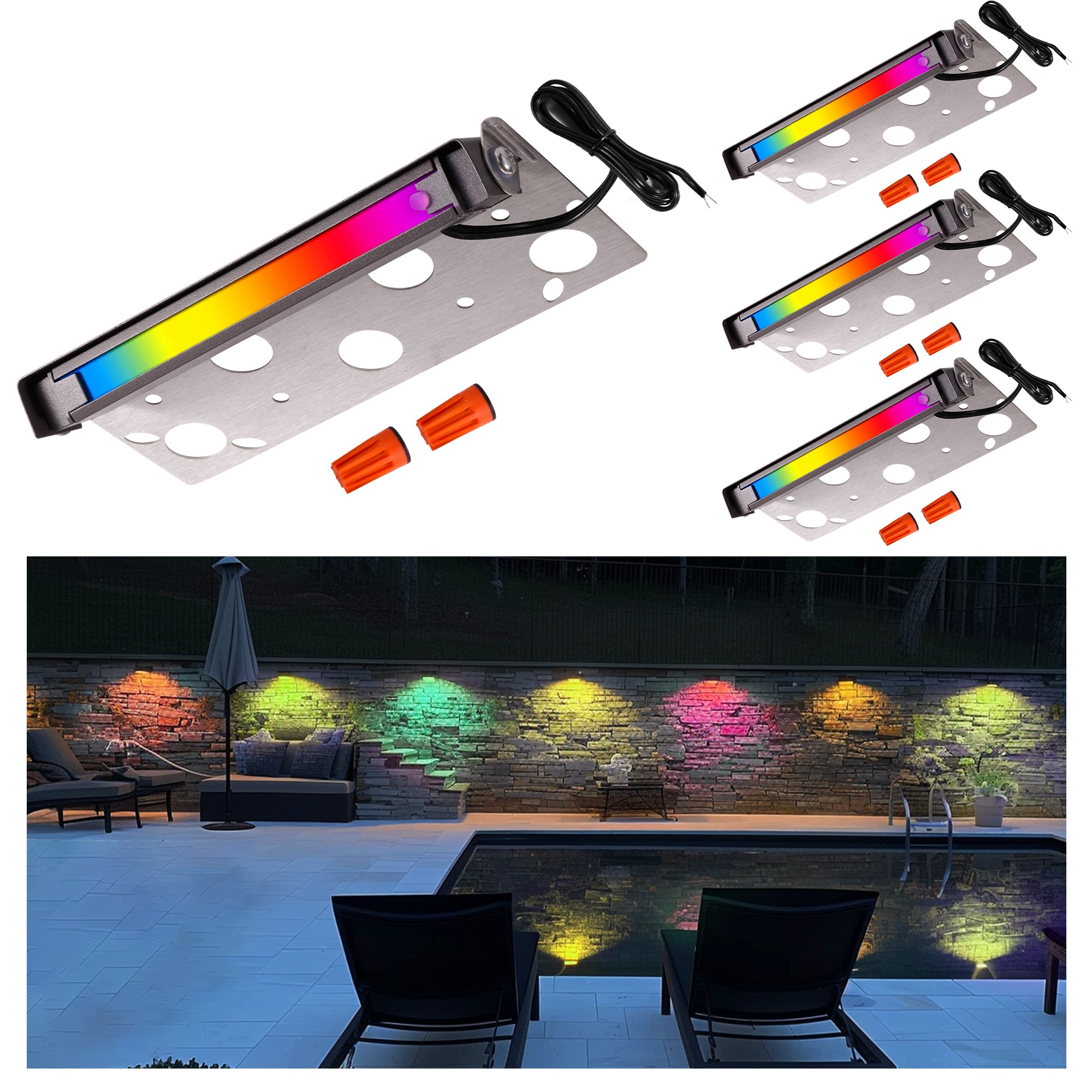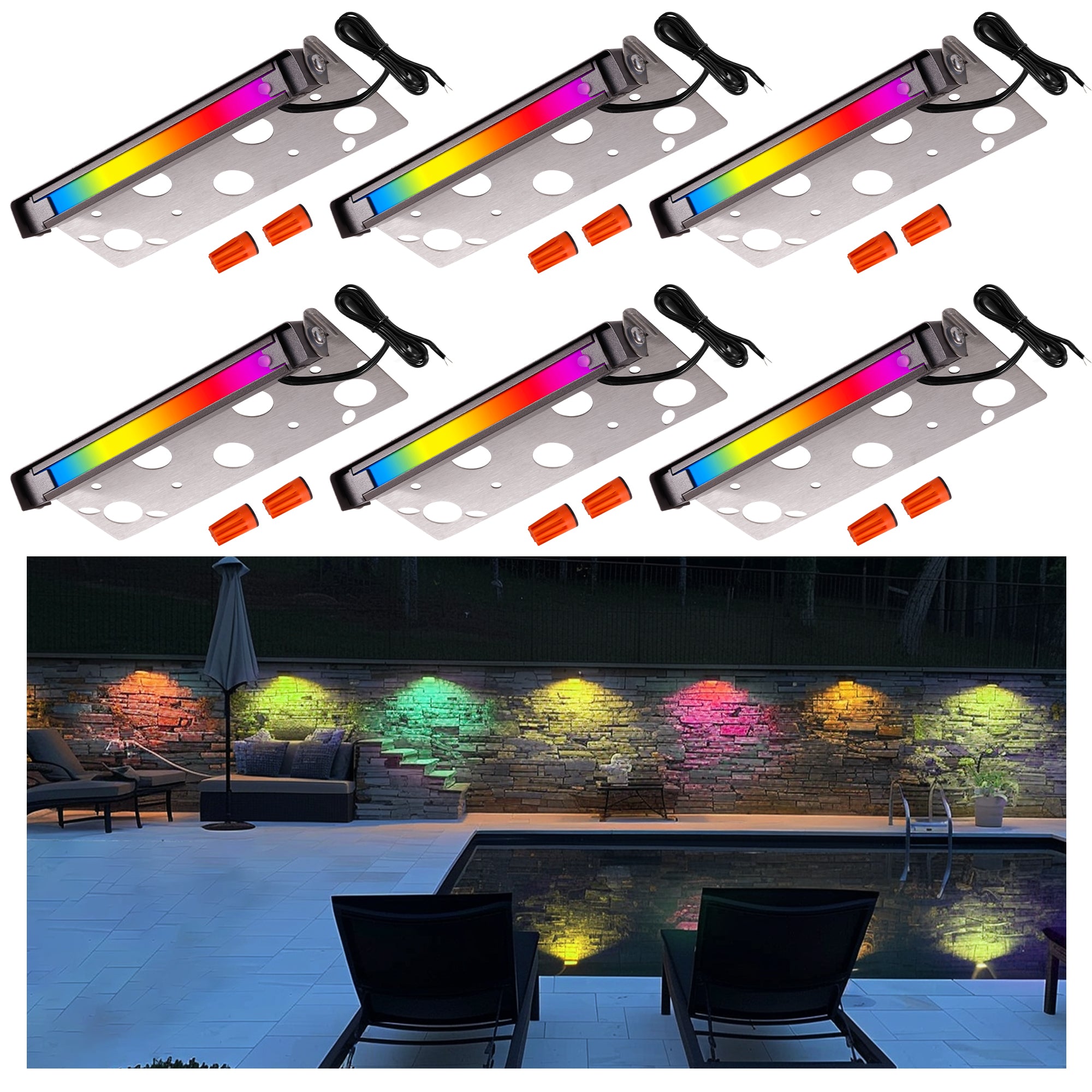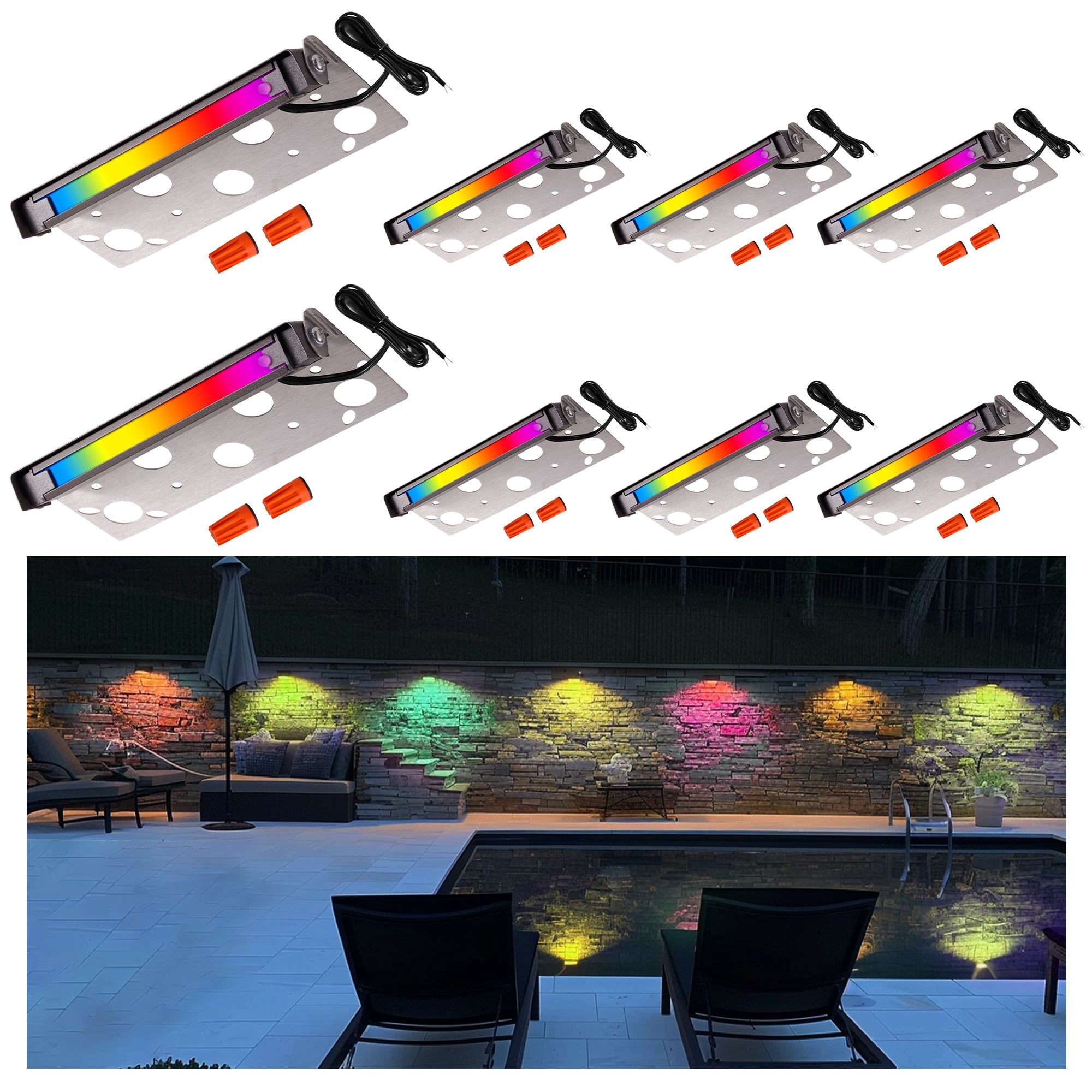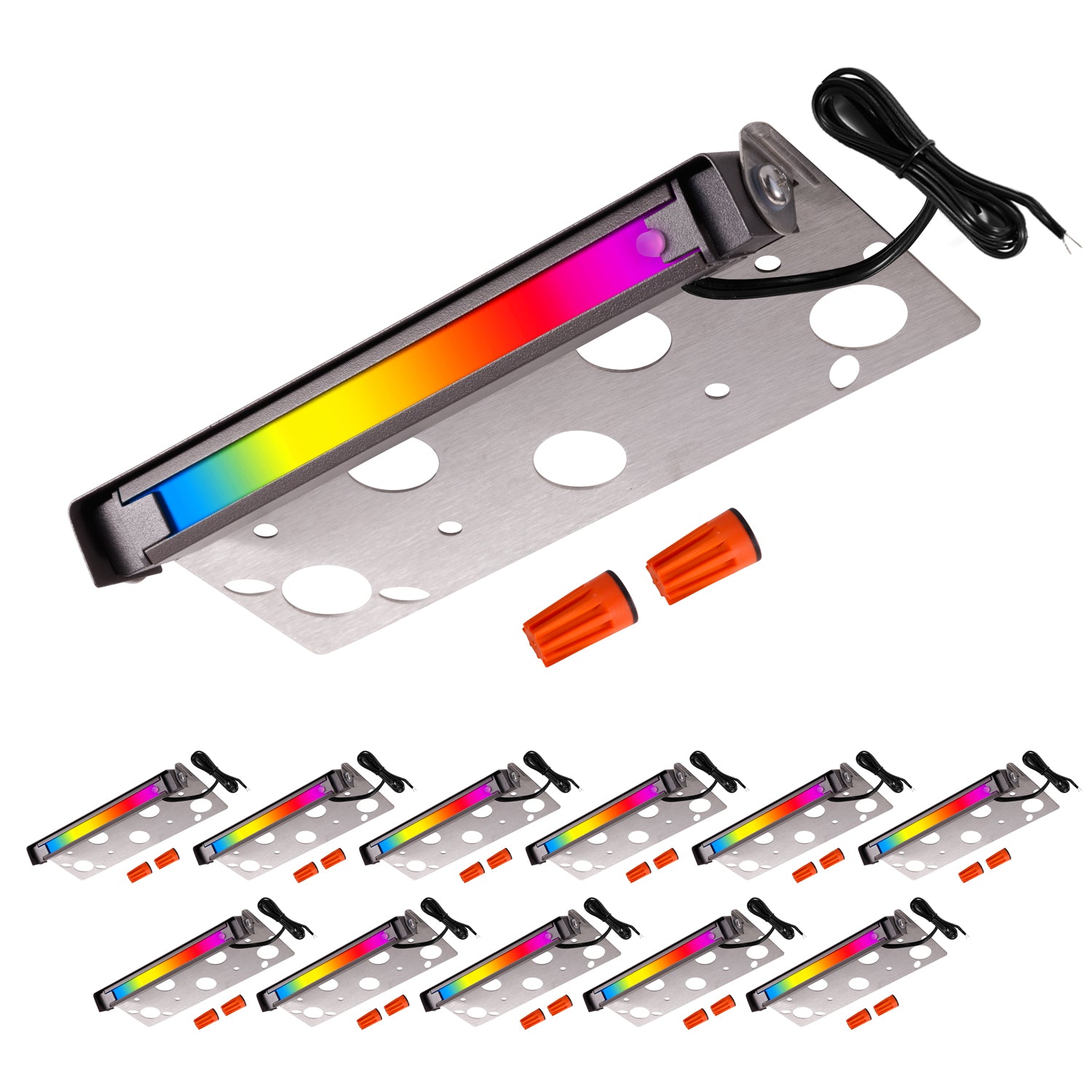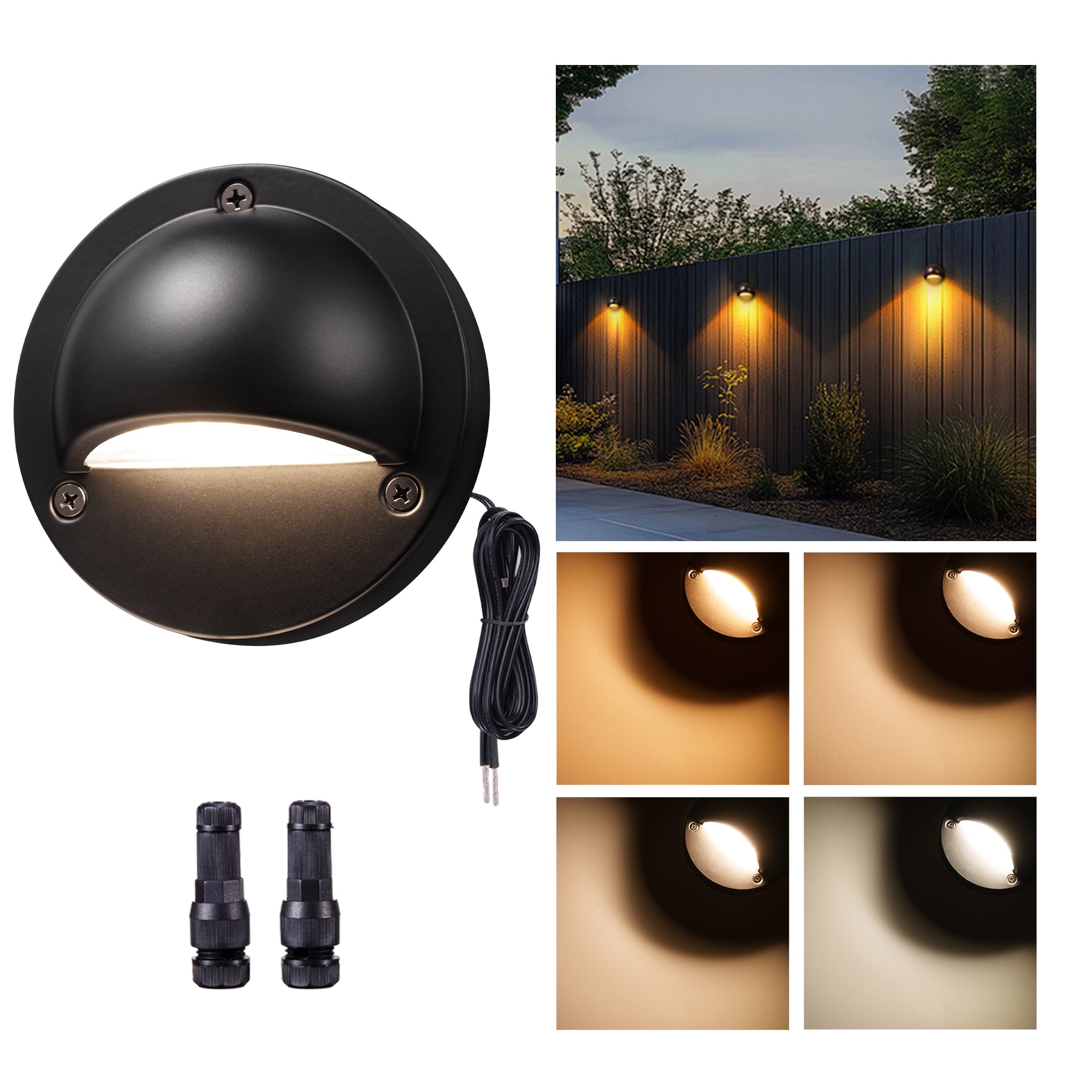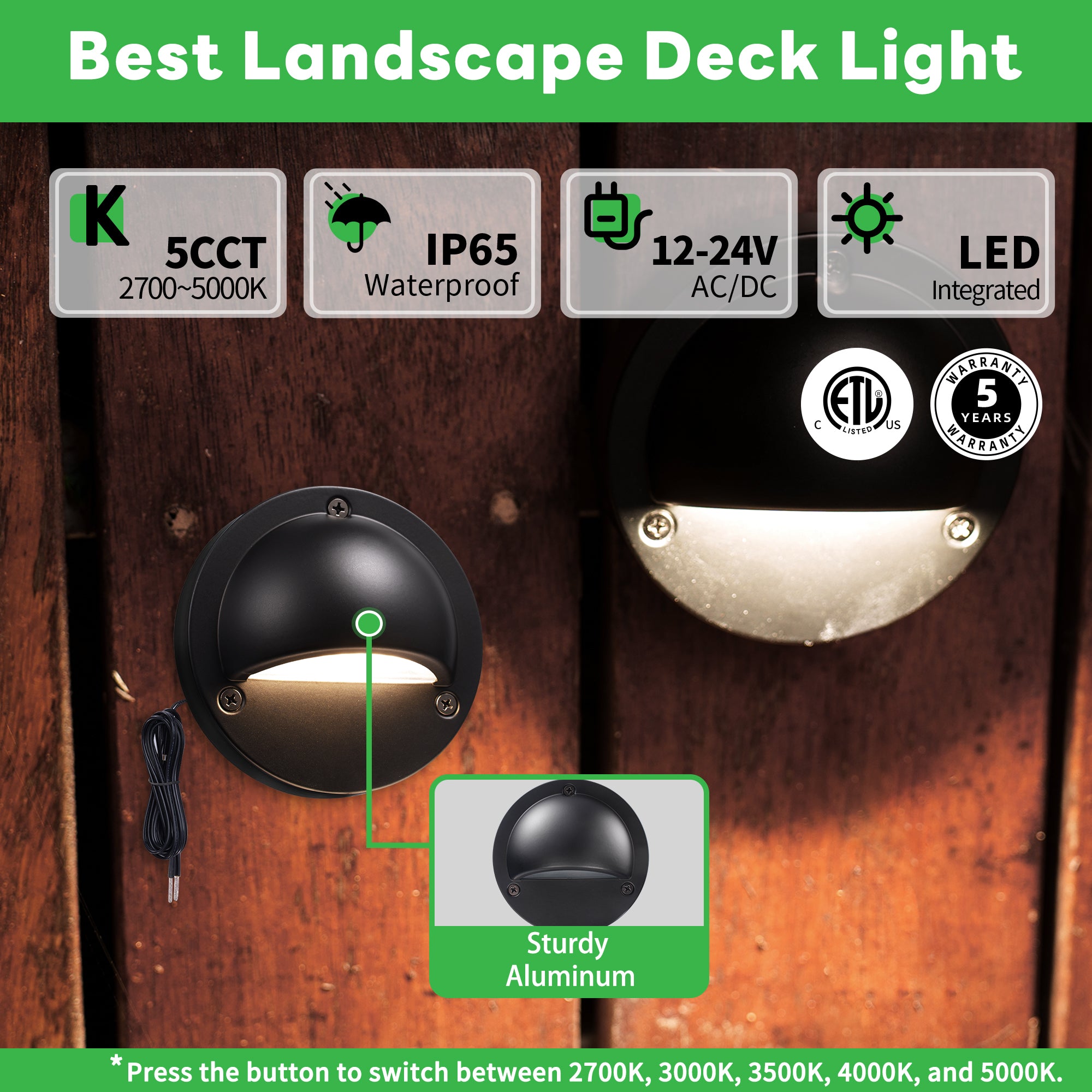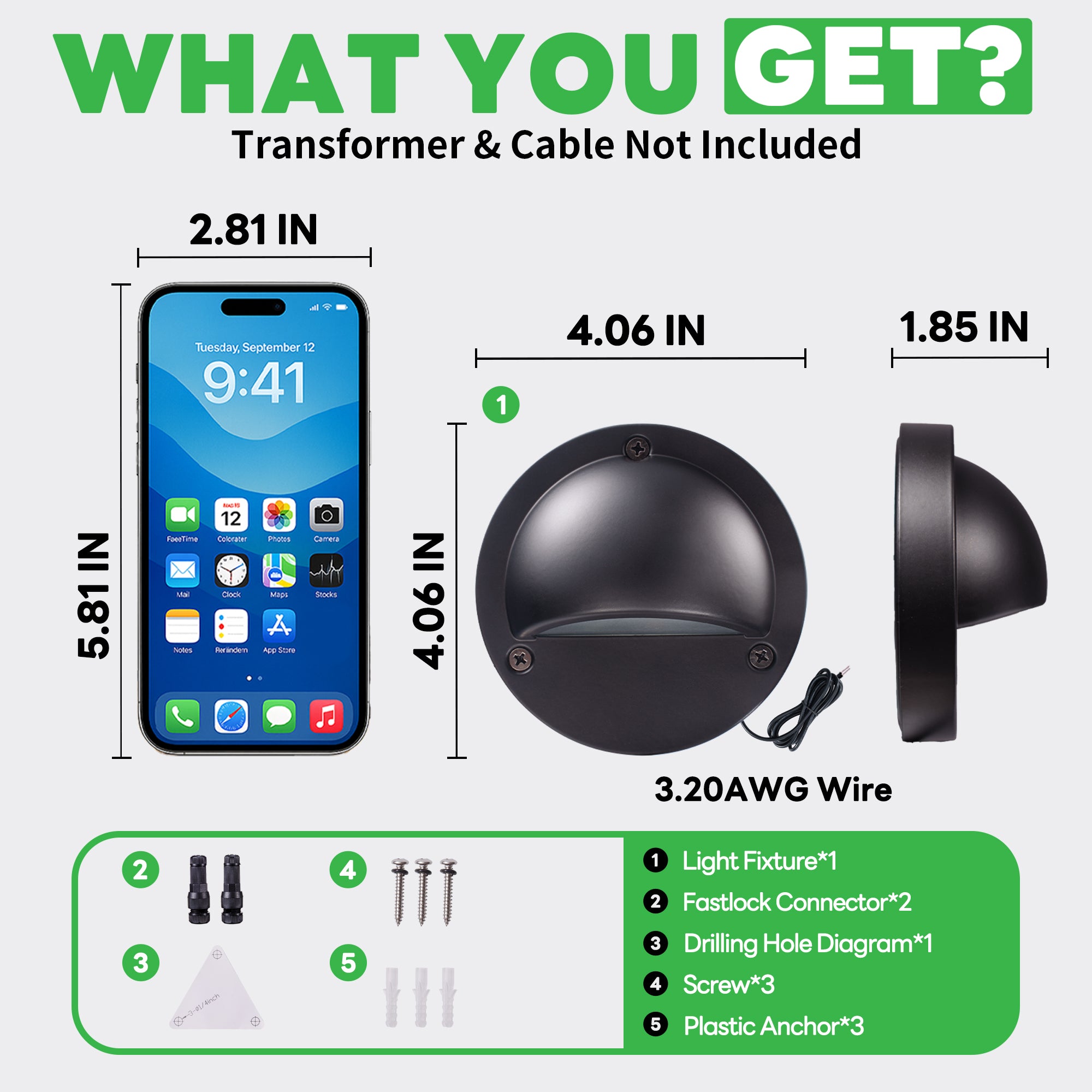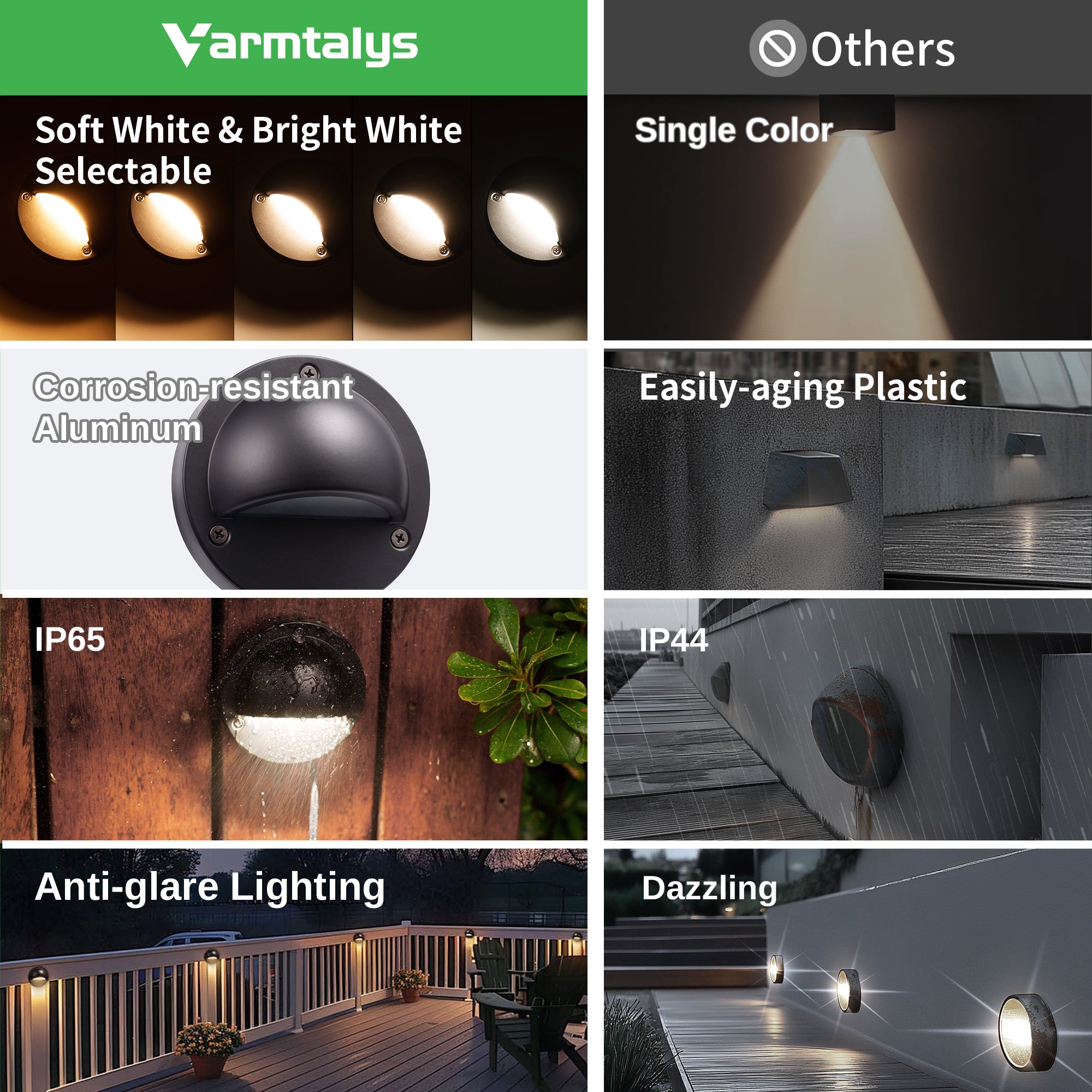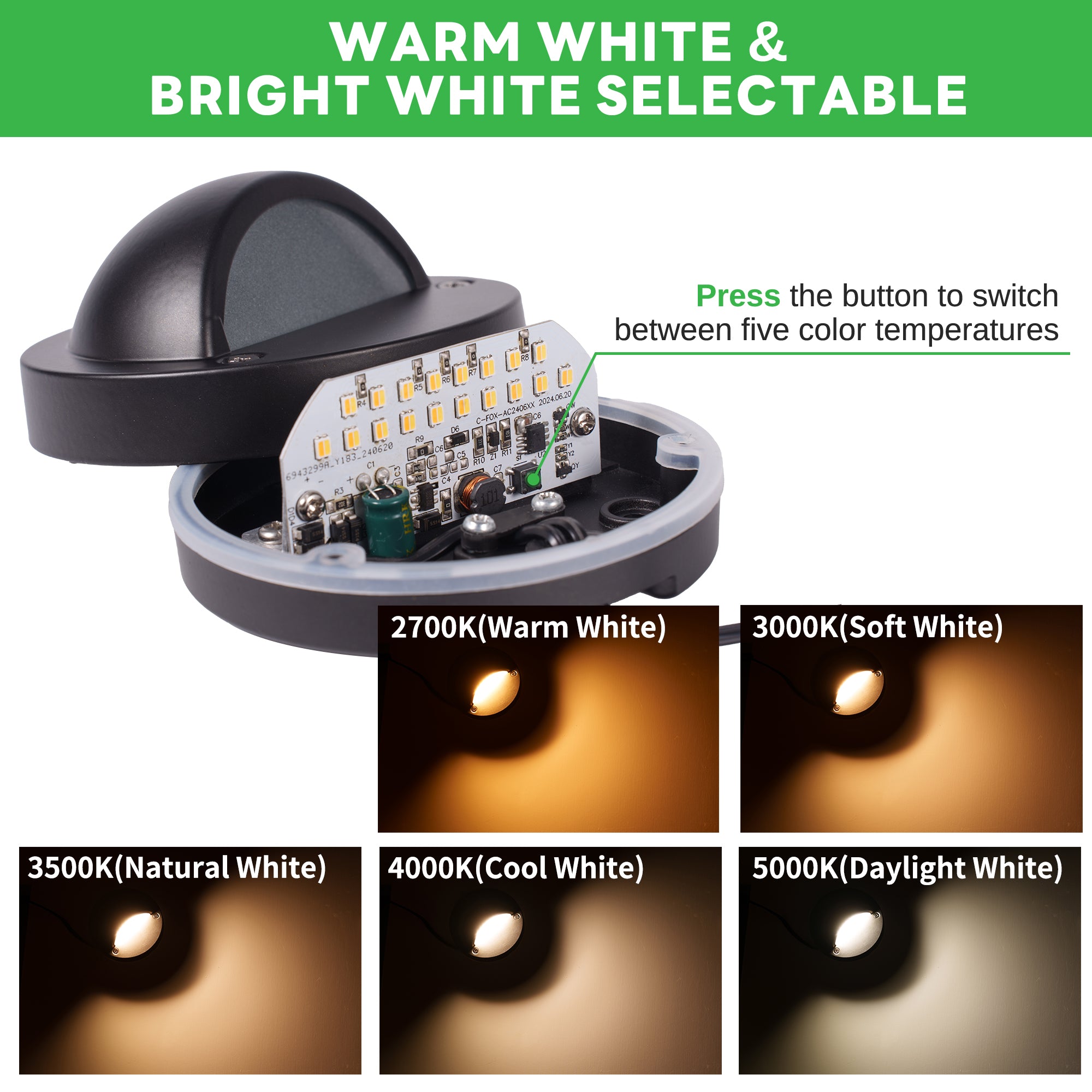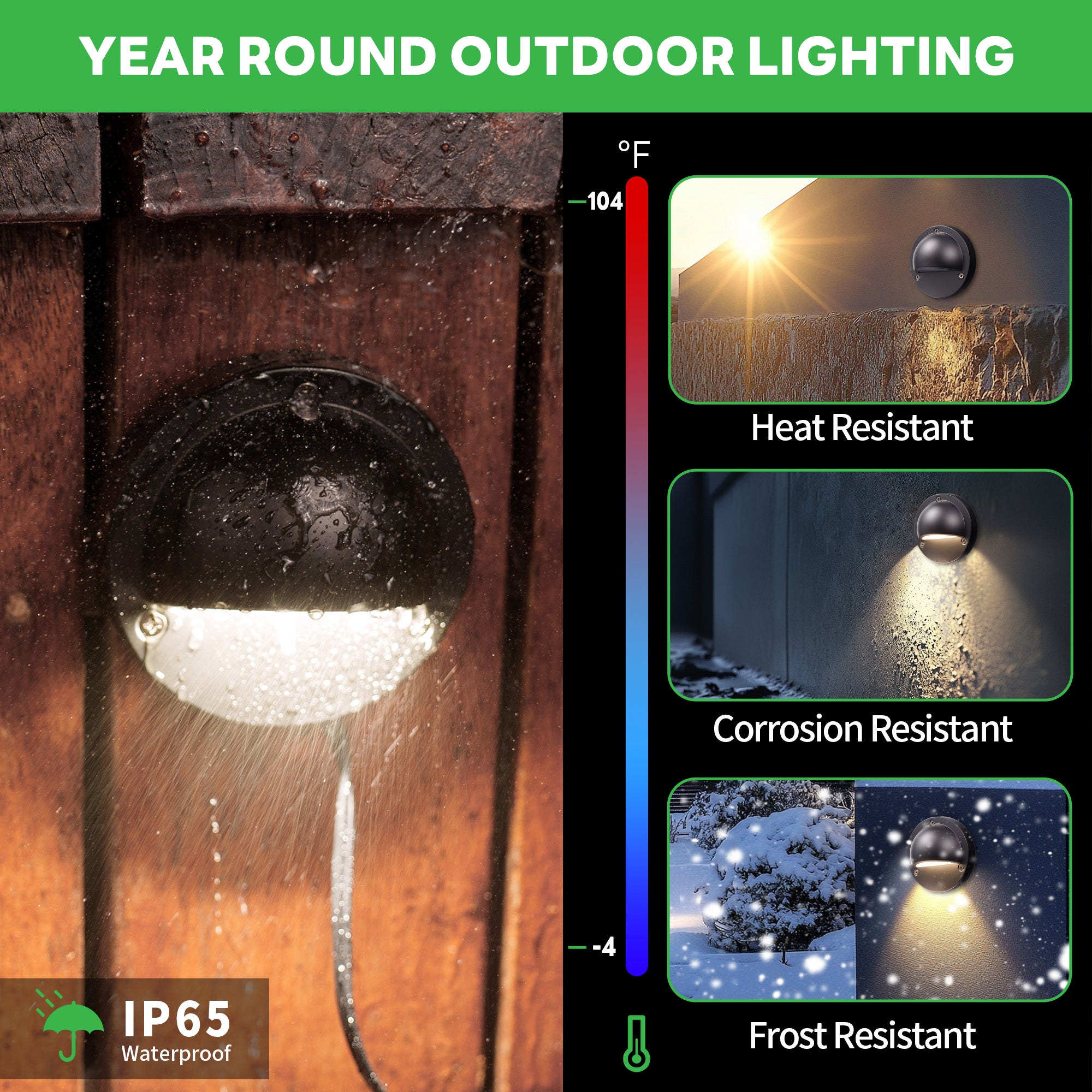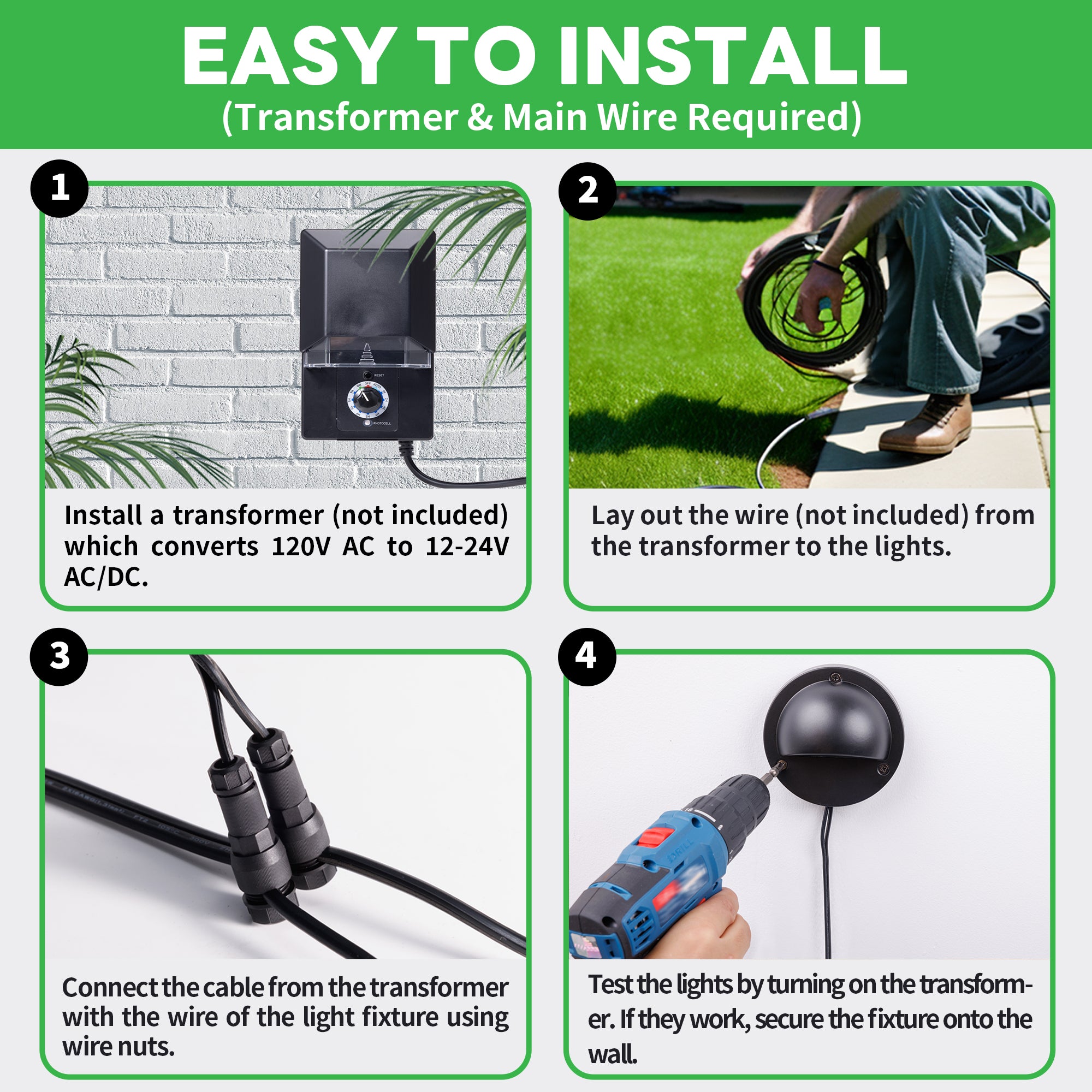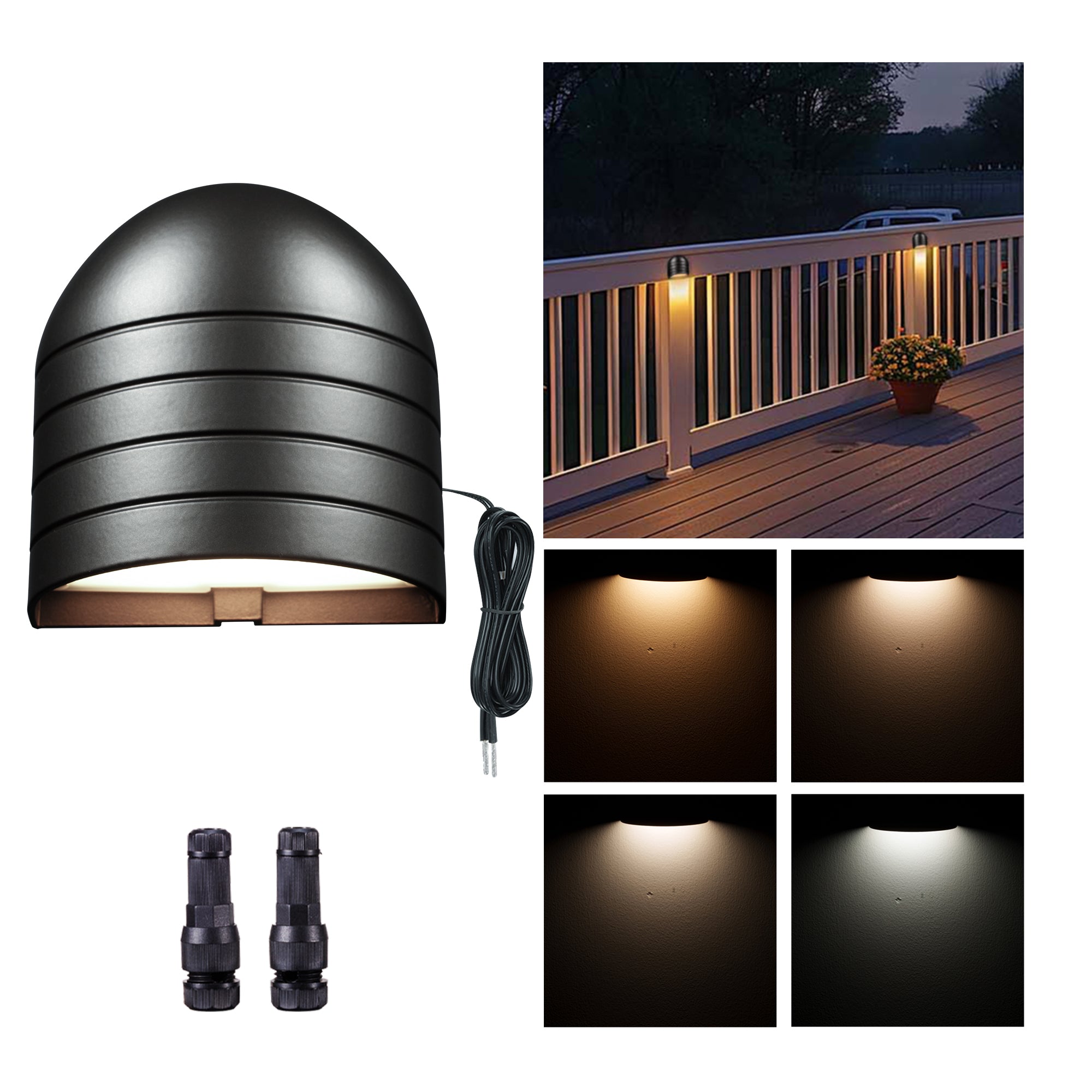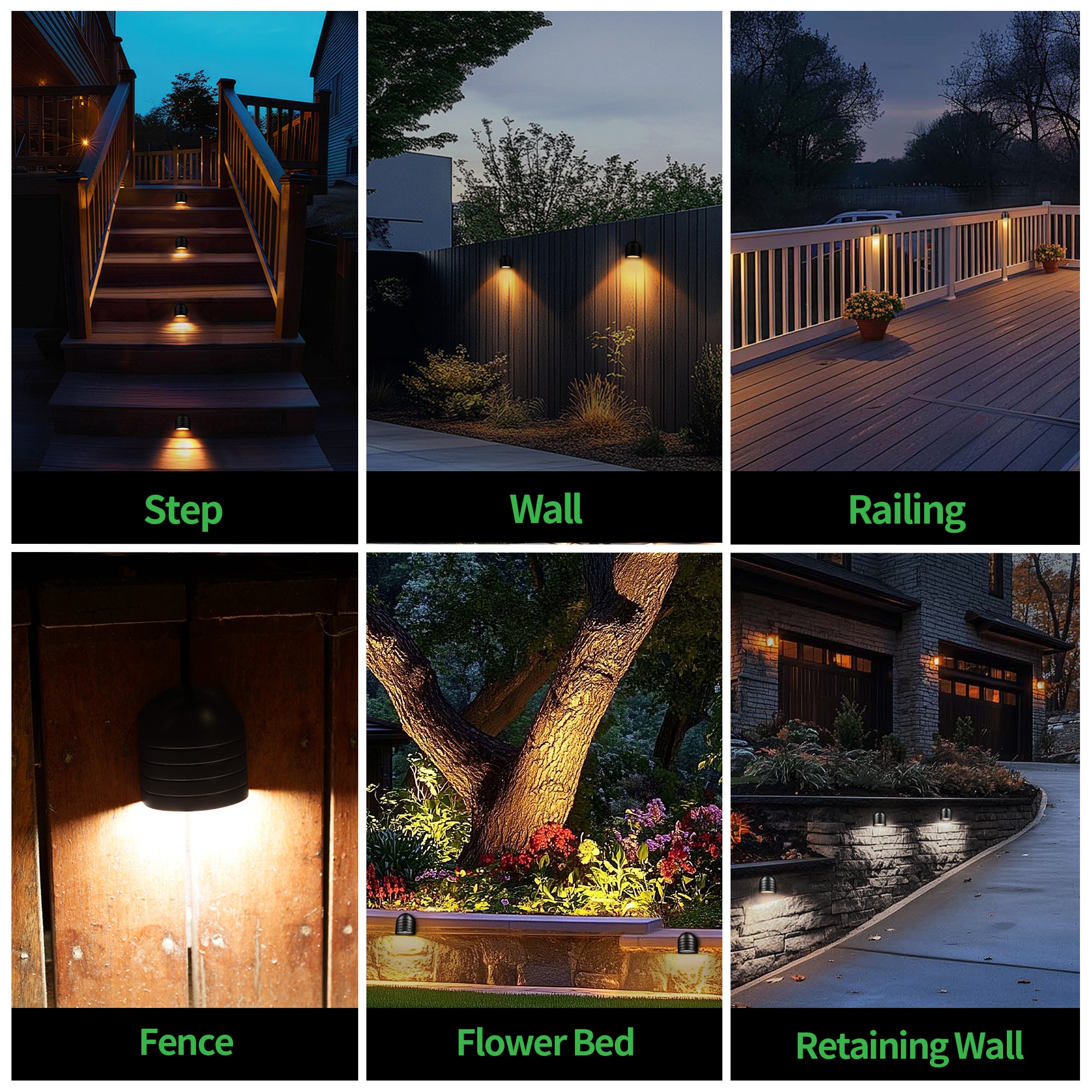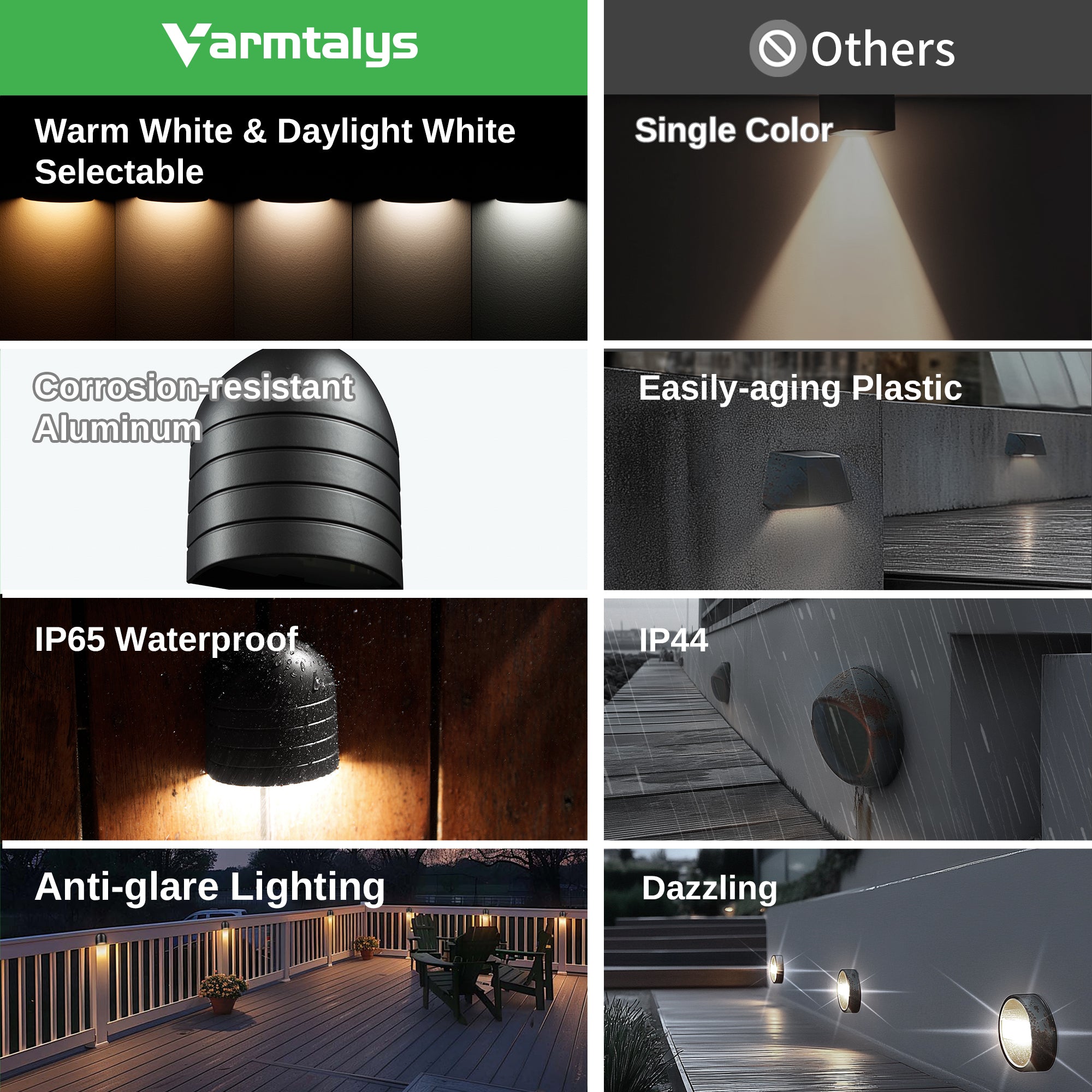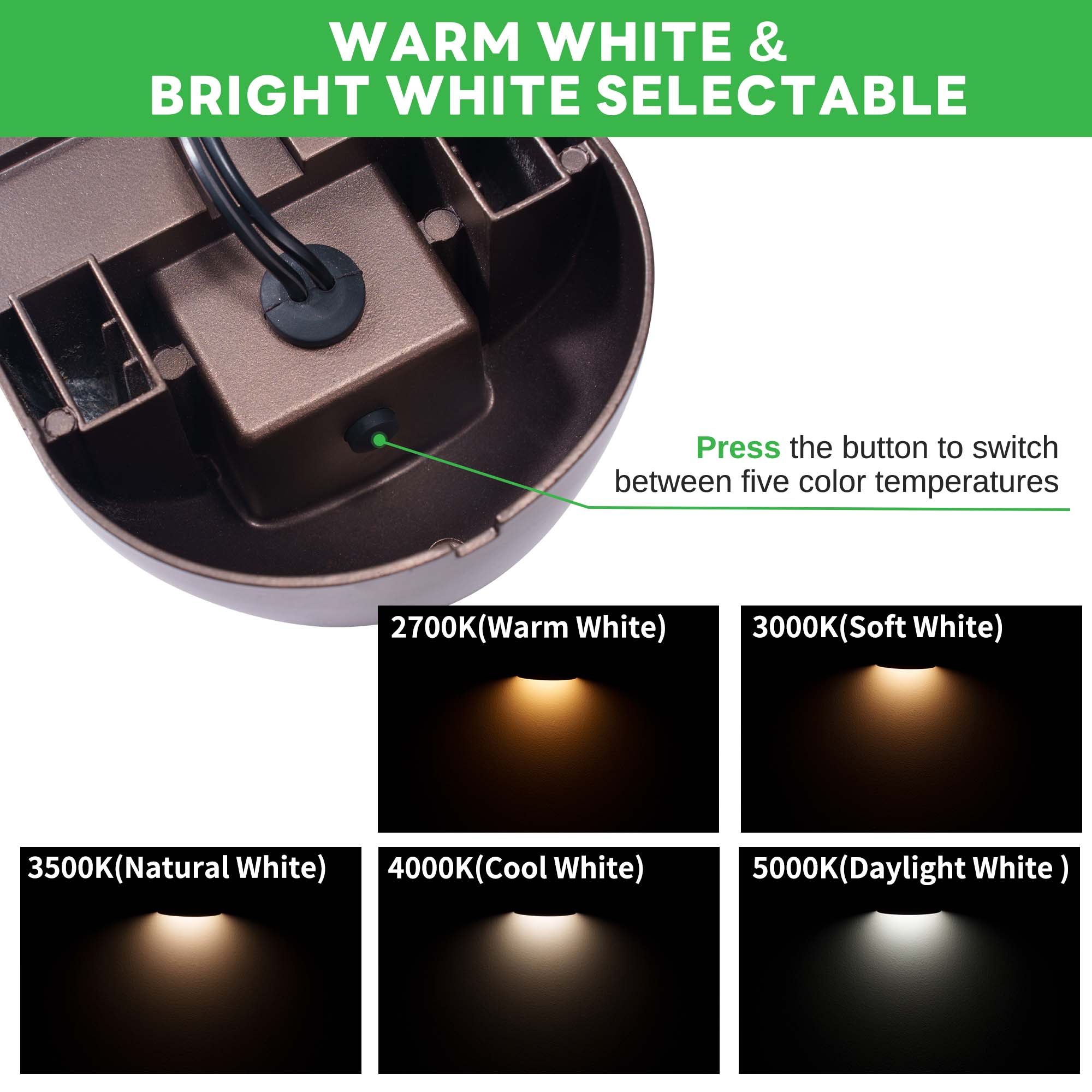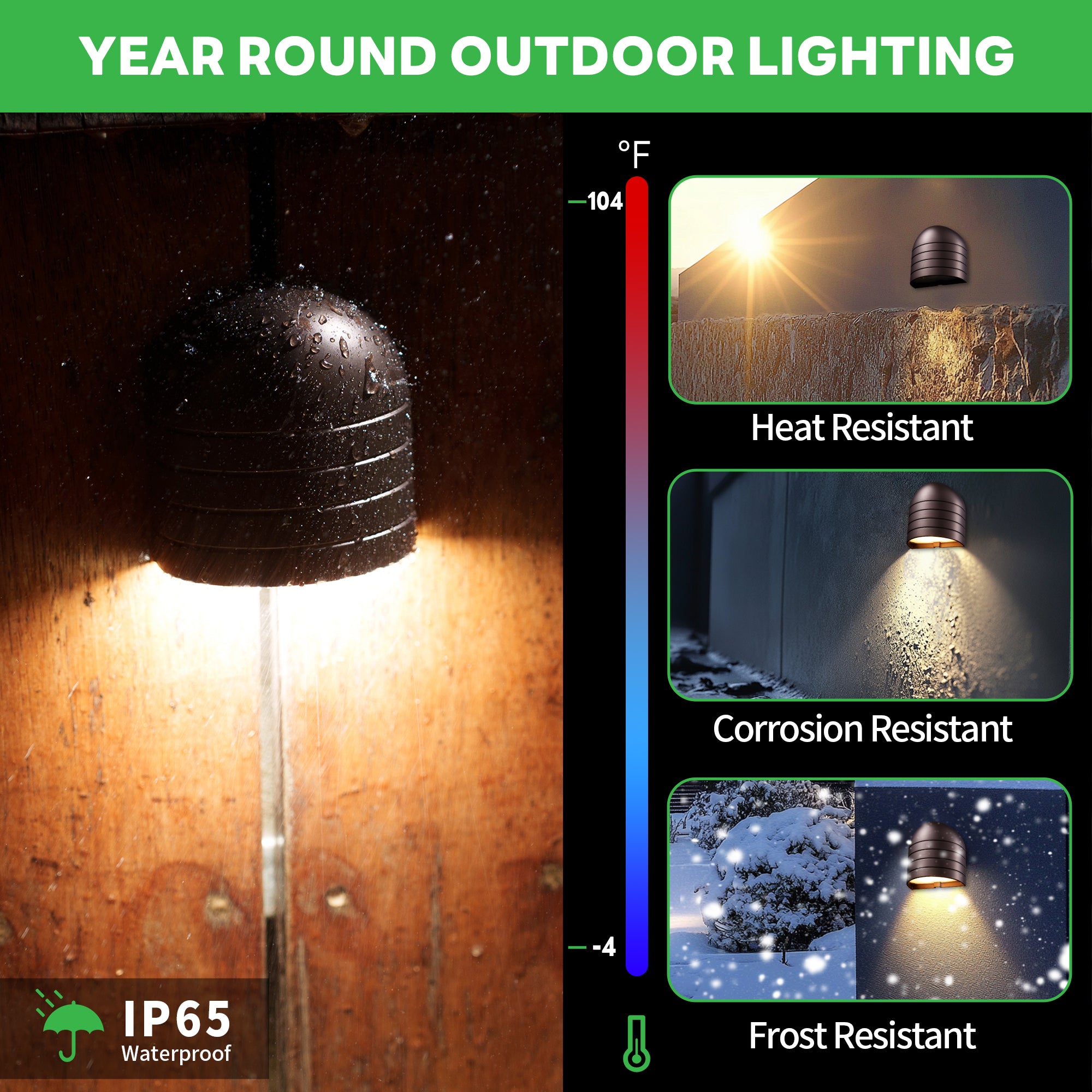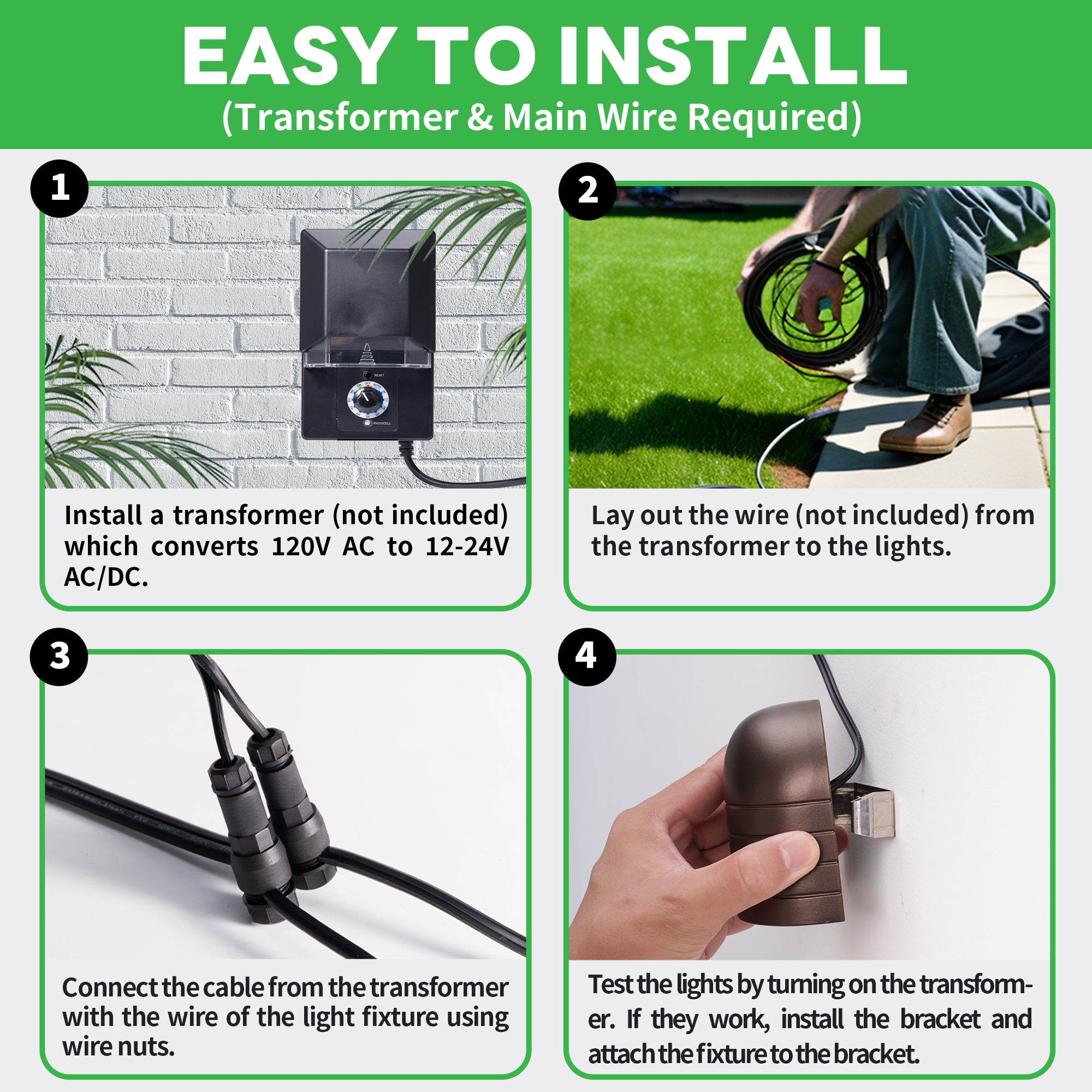FAQ
Differences between step lights and hardscape lights?
Step lights and hardscape lights serve distinct purposes in outdoor lighting:
Step Lights: Designed primarily for illuminating steps, stairs, or pathways, providing safety and guidance in low-light conditions.
Hardscape Lights: Intended to accentuate features like walls, columns, or other hardscape elements, adding depth and visual interest to the landscape.
Voltage for step lights and hardscape lights?
Step Lights: Operate on 120V high voltage.
Hardscape Lights: Operate on 12V low voltage, providing energy efficiency and safe operation, especially in outdoor settings.
How to properly install 120V step lights?
Installing 120V step lights requires careful attention to safety and stability to ensure proper functionality and prevent hazards. Follow these steps for a safe and secure installation:
Selecting the Installation Location:
Choose a suitable location for the step lights, ensuring they provide adequate illumination for safe passage.
Ensure the mounting surface is sturdy and capable of supporting the weight of the fixtures.
Preparing the Mounting Surface:
Clean the mounting surface to remove any dirt, debris, or grease that could affect the installation.
Use appropriate tools and hardware to securely fasten the fixtures to the mounting surface, such as screws or mounting brackets.
Connecting the Wiring:
When connecting the circuit of step lights, it is essential to first turn off the power. Power-off is an important step to ensure safety.
Ensure all electrical connections are made securely and properly insulated to prevent exposure to live wires.
Use waterproof junction boxes and connectors to protect the wiring from moisture and weather exposure.
Testing the Lights:
After installation, test the step lights to ensure they are functioning properly.
Check for any loose connections or signs of instability, and make adjustments as needed to ensure the lights are securely installed.
Safety standards for installing 120V step lights?
Installing 120V step lights involves electrical wiring and outdoor installations, so it's essential to adhere to relevant safety standards to minimize the risk of accidents or hazards. Here are some safety standards to follow:
Electrical Code Compliance:
Install step lights in compliance with local electrical codes and regulations.
Use appropriate wiring methods, junction boxes, and conduit to protect the wiring from damage and ensure electrical safety.
Waterproofing and Weatherproofing:
Choose fixtures and components that are rated for outdoor use and designed to withstand exposure to moisture and weather elements.
Seal all outdoor electrical connections with waterproof materials to prevent water ingress and corrosion.
Structural Integrity:
Mount step lights securely to ensure they remain stable and in place over time.
Select mounting surfaces that are strong and durable enough to support the weight of the fixtures.
Proper Grounding:
Ensure all electrical components are properly grounded to reduce the risk of electric shock and fire hazards.
Use grounding wires and connections as specified by the manufacturer and local electrical codes.
By following these safety standards and guidelines, you can install 120V step lights safely and securely, providing effective illumination for your outdoor space while minimizing the risk of electrical hazards.
What is the waterproof rating?
With an IP65 waterproof rating, both step lights and hardscape lights offer protection against dust and water spray, making them suitable for outdoor use in various weather conditions.
Do the lights come with a plug?
No, the lights do not include a plug. They are need to be hardwired into a low voltage cable.
How many step lights do I need?
The required number of step lights depends on various factors including fixture spacing, staircase length, and desired lighting effects. Here's a breakdown to consider:
Fixture Spacing: The spacing between step lights is crucial for uniform illumination. Typically, lights are installed on each side of every step, or adjusted based on specific requirements for even coverage.
Staircase Length: Determining the number of lights based on the length of the staircase ensures adequate illumination along the entire pathway. Longer staircases may require more lights to ensure sufficient lighting.
Lighting Effects: Consider the desired lighting ambiance. If you prefer soft ambient lighting, you can install a light a few steps apart and need fewer step lights. Conversely, if you desire more intense lighting effects, additional lights or higher intensity may be necessary.
Considering these factors collectively will help you determine the appropriate number of step lights to meet your lighting needs and preferences. Experimentation and adjustments may be necessary before installation to achieve the optimal setup.
Does it include a transformer?
Step lights are connected to 120V high voltage and do not require a low voltage transformer. Whereas hardscape lights require a separately purchased cable and transformer.
What size transformer should I choose?
Depends on the power of the transformer and the bulbs, while the electrical energy will inevitably lose 20% of the voltage during transmission.
For example, if the transformer is 150W and each bulb is 5W, then 24 fixtures can be installed (150 x 80% ÷ 5).
What type of light source?
Step lights and hardscape lights use integrated LEDs with a lifespan of up to 50,000 hours.
What is the warranty period?
The step lights and hardscape lights come with a 5-year warranty. Any quality issues within this period warrant a free replacement.
How many hardscape lights do I need?
Determining the required number of hardscape lights involves analyzing various factors including fixture spacing, wall length, desired lighting effects, and the number of features to be illuminated. Here's a breakdown to consider:
Fixture Spacing: The spacing between hardscape lights is essential for achieving uniform illumination. Typically, lights are installed approximately 6 to 8 feet apart along the hardscape feature, ensuring consistent coverage and avoiding dark spots.
Wall Length: Consider the length of the wall or hardscape feature that you intend to illuminate. Longer walls may require more lights to ensure adequate lighting coverage along the entire length.
Lighting Effects: Determine the desired lighting ambiance and effects. If you prefer subtle accent lighting, fewer lights may be sufficient. However, for more dramatic lighting effects, additional lights or higher intensity may be needed.
Number of Features: Assess the number of hardscape features you wish to highlight. Each feature may require its own set of lights for optimal illumination, especially if they vary in size or shape.
Taking these factors into account will help determine the optimal number of hardscape lights to achieve the desired lighting effect and coverage for your outdoor space. Experimentation and adjustments may be necessary during the installation process to achieve the desired result.



